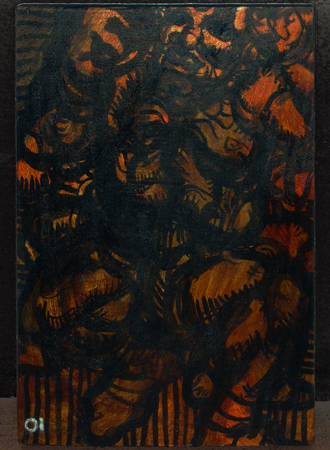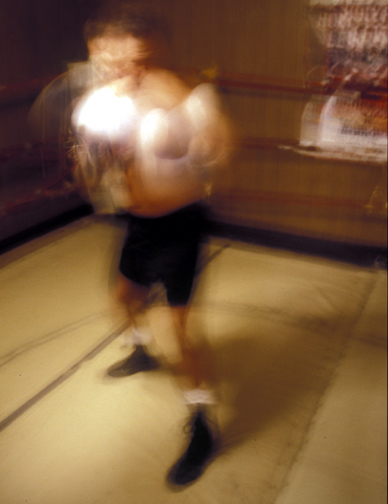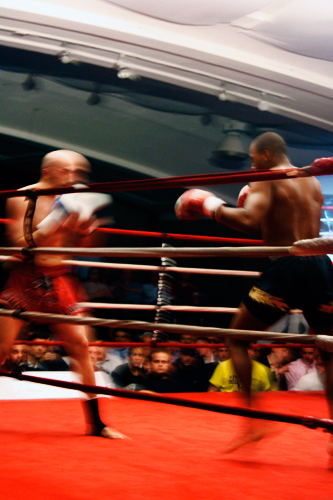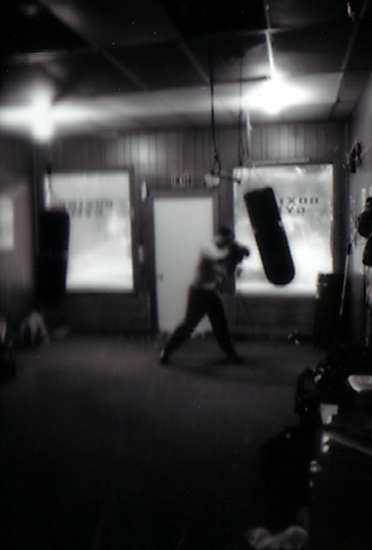TWO
∞
The spacious chamber was lit at an early morning setting, in the manner of a crisp fall on East Coast North America, specifically Washington, DC, circa 2000.The walls were fashioned of a marvelous deep green faux-stone, replete with bluish-white veins and creative imperfections in the likeness of no actual geophysical relic. The finish was a patent product of Fine F-Rox & Associates, an outstanding outfit with SOHO offices and franchisees in other Pop-nodes. The Council filed into the room a little before the appointed time. Some visited the refresh-bar and the posh spread, a stellar Continental breakfast, tended on the West end of the hall by a rolling team of high-performing cater-waiters. Soothing synth-sonatas supplied a non-interferent bed for the important murmuring pre-conferencing happening in fluid pods amongst the powerful folk gathered here, in MGT CTR8, at 1WTC/UN. A signal of three neutral-ish intensity belurps sounded, and in short order all took her and his appointed ergo-chair. You might recognize some of the VIPs, and others you might not. ID-bots and drones darted about the room, vidi-soni-charting and subtitling/translating all post-signal activity, capturing every nuance in hi-def. The program emerging from this convocation would be narrated by a top outfit of auto-presenters and COMMent-vatars, from award-winning Chan4. The gavel sounded and superfluous discussion ceased. Eyes turned naturally to the Big Players. Biddle3 adjusted his silken red, white and blue necktie. Kissenger9 sat sphinx-like with fat hands folded in his wide-hipped lap. Representative Boner drew a smoky breath, as if to speechify, and Cheney14 snarled, "Shaddup. When we want to hear what you have to say, you'll know it, you dense fuck." "This ComSec MTG of MGT LVL 8 is now active," the VocodOR pronounced. Bush28 sighed. A raspy voice in the back growled, "How could you have let Jackson and the Novads escape, you retards?" "Decorum, please," the F-OR6 intoned, in its melodic female simulVZ. CONTRACTOR-42x spoke evenly, gaze traveling from one pallid, limp face to the next, as he did so. "This EX5 Conference is convened to discuss SITU-49299577-AW200fx. You all have been apprised of the scenario. The effects are accelerating. Please note: We have located and acquired the Stone of Errull. MGT is abandoning pretense of adherence to Gen-SOP26f. We see no worthwhile reason to continue the charade. The technocracy has been supplied the usual pablum for dissemination through state and private media channels. The scripts are in play. Mobilization of OPS-Net is in Phase 4. We have a projected timeline of 6 quad-cycles plus or minus 1. Of course, all subject to change, depending." Feinstain bleated, "How are we supposed to sell this program to the Base? As you must be aware, the occupation is fraying dimensionally. Our overlapping nodal control-net is functioning at 47%, since the Episode. Reports indicate that our containment protocols are approaching critical desumption phasing, and override devolution is a real threat." "Do your job, bitch" a Koch Twin (28) spat. "It's what we pay you to do." One of the staff interns approached the conferrees' center-table of black faux-hagony with a plated platinum beaker of golden liqui-form ros-i-spex on a spinning dyno-tray, latest Paris model. Gates6, Bloomberg2 and Buffett7 all reached for their laser-engraved frolli-goblets in unison. The posi-charge detonated the instant the tray contacted the shiny surface of the table. The entire room and everything in it vaporized in a rainbow-hued mist of chronic particulates. The only things identifiable in the dust afterwards were the dentures and fake breasts of the attendees. This mass assassination henceforth was called The Rosispex Bloom. PEMAKAR claimed responsibility, via tw*t:
Betcha didnt c thet comin didja bitchez... all artOffishulz BWar3> WE R LEJUN
Other of the 1000 Revolutionary Acts carried out on 12a-30-2012:
[1] The C-class executives of Hobby Lobby were found crucified in Store 226 by employees arriving at the location early in morning in anticipation of the rush of Holiday shoppers.
[2] All parties of BP, Halliburton, etc., in any way associated with the Big Spill were found stuffed into 50-gallon oil drums on a container ship moored in New Orleans.
[3] Yoo, Addison, et al., were over weeks tortured to death in decommissioned Black Sites (video documentation uploaded to YouTube)
[4] All Fox News employees and News Corp owners and MGT were immolated in chem-storms transmitted via internal memo/gwatmail
[5] Davos and the Fed, ECB, etc., were reduced to rubble in drone strikes.
[6] Industrial robotix of every description planet-wide were stripped of code.
[7] The ©loud was obliterated. Not a single storage/server array Class 3 or higher escaped the devastation.
[...] [Multiple accounts of the PE:MAK:AR 1CamPAIN are available in range of formats. The Anarchives contain a Special Edition titled Puncturing the PowerGrid: Courage and Carnage in Flipping Hierarchies by Wanda Sponda, the great PD ana-historian and social ontologist poet-author. Collective accounts include CrunchTime and the Novadic classic BOOMBOOM MGT GO OUCH!!!
The 1CamPAIN launched on the nines with a mono-sign encrypted dimensionally in the now-notorious transmission:
THE VIRUS IS ON YER DURASKIN BRO !!! {tw*t 9247}
Wanda summarizes:
The PEMAKAR enacted a radical purge of upper MGT at hyperspeed, with tremendous efficiency. The meta-boomerang strategy utilized in the multi-pronged nodal infusion disrupted a host of operationals and decimated the E-class, maximizing obviation of top-down command/control in all sectors. Media regents were obliterated in Stage 2.0 of CamPAIN, as were the transfusion centers and Hive Mind emitters. While the various agencies scrambled to re-organize, Novad & other cells wreaked havoc throughout the HOLOC tiers. The violence was sustained and latent observers noted that the effects of tactical action and subversion yielded what was at the time interpreted by MGT Sys-Analysts to be Centrifugal or Centripetal Force combinative irruption, the actual incidental phenomena created by CamPAINists were Toroidal in essence. The cine-version of BBMGTGO!!! explains the subtleties of the movement through colorful animation and animatronic sequences. Re-enactments only tell part of the story, and painting a picture of the stunning victory necessitated a panaramo of unprecedented size and scope. The story unfolds at the Museum of Switched Logology in X-StanfordConn in a huge Obloid nearly 15STEX in volume. The MDI-Pitch alone is 42 OsotZ high and wide. Compression is, as you can imagine, a big issue. I devoted over 22 cycles, assisted by over 50 super-qualified Q-interNS, in favricating/-recting the narrative in its BETA Draft phase. The Concentric Editing phase took 18 cycles and involved the entire Ana-cademy for all 12 OAS nodes.
Anyway, by the time MGT correctly assessed its predicament, it was all over but the song and dance. MGT was subsumed into the Parallax {see File:20AXE79433-294ffX}.
15
Okay, class - today's lesson is called "The Mountain." Our focus is "the most photographed mountain in the world," Switzerland's Matterhorn. This is sort of an absurd claim, that the Matterhorn is the superlative, the "most" photographed mountain. I could set up a digital camera and photograph any molehill endlessly, for all intents and purposes, if I have enough electricity and storage. Such is that state of declamation in the post-modern, wired planet with its wondrous, ubiquitous mobile devices and easy access power - at least for us rich folks! So, so, so! As I was saying before I rudely interrupted myself for some self-deconstruction, for this session we'll be exploring the Matterhorn through the lens of iconic Jean Baudrillard, and adding layers of media analysis and art and even a dose of animism... [the class, as prompted, shouts, "PLUS MORE!"] Thank you. I mentioned Baudrillard, but as you can see from your reading list, many other profound thinkers will be quietly adding their input to this exercise. Hopefully you've done your readings over the weekend. As you all know, our approach in this course I have registered as 4 Dimensional. We talk about time, space, changes. We consider fundamentals, composites, comparisons. We evaluate things and non-things together. We are always adding to our body of viable considerations, using the formula N + 1, after the Dimensionist Manifesto. We play at reduction, but we are not seeking a recursive conclusion. Our playing field is infinite, but we enjoy giving the finite our undivided attention sometimes. We get into the technical part. We inspect the machinery. We immerse ourselves in nature, as such. We try to understand how language affects our practice. We eventually do production. After the actualization, we evaluate outcomes. We apply filters to info and search for pattens that reveal form and the absence of anything. [cue: "Plus MORE!"] Right! So. Li Han, if you will dim the lights and, students, turn your impressive attention to the projections. Here we have the glorious Matterhorn. Majestic, yes? Pay no mind to the evaporating glacier there on the periphery. Next slide. This is the Matterhorn ride at Disneyland. Beware the Abominable Snowman! If we juxtapose the two Matterhorns, the Disneyland Matterhorn and the one in Switzerland, which is almost 5000 meters tall, we raise the prospects of a conversation about simulation, representation and other features of abstraction of interest to the philosopher and media theorist. What qualities do these two Matterhorns share in common? Chronology might appear to differentiate the two Matterhorns substantively, until we delve into the subatomic, where time may or may not have traction. Do we add adjectives to the Matterhorns, in order to distinguish them? Is one "natural" and the other "artificial?" The contextual narratives attaching to both Matterhorns are fascinating enough for further investigation, as framed by neo-scientific disciplines anthropology, sociology, fields of study in human behavior and organization, the study of ourselves as the Other, yes? For instance, why would so many people feel compelled to photograph the Switzerland Matterhorn, of all the available mountains worthy of being photographed? The Matterhorn, we can note, is not even the tallest peak in the Alps. Is its pyramidal shape that which affords the Matterhorn some edge in the ersatz competition? Who knows for sure? As for the Disney Matterhorn [unintelligible exclamation], the fact that the artificial Matterhorn is located at Disneyland suggests an infinite number of wonderful questions to ask. Independent of the Matterhorn question, Baudrillard had much to say about Disneyland. Management-oriented studies of the Disney corporation spark inquiries galore. Do we need to understand the man, Disney, Disneyland, California, America, the 20th Century, etc., etc., to have a meaningful discourse about the fun-ride Matterhorn, that carnival attraction, with its sub-narratives, minor mythologies, and curiosities? From a media standpoint, is the Disney Matterhorn competitive with the original, with respect to how often it has been photographed and filmed? Hmmm. [class together: "HMMM!"] I'll stop there on this introductory thread, and move in another direction, hoping we have begun to scrape the surface of the Matterhorn as something worth thinking about, analyzing "it" in multiple directions and versions. Let's open the Matterhorn up as a way to examine the Image, as a post-Modern, or contemporary or other kind of dimensional, complex visual code or codex. As a clue to my own line of thought, I'm going to insert here a question: Is the Matterhorn best comprehended in terms of a Platonic Ideal? Any of you who find that notion worth writing about can submit a 1-page brief to me at the end of the semester for extra credit! So. I asked my friend Lev Manovich to assemble some data visualizations for our Matterhorn project. Over here on Screen 3 we see his work in all its glory. Try to think of these visualizations on their own terms, too. They have their own features (like interactivity), their own logic, their own beauty, or, Lev argues, their own aesthetic. These are available online, by the way, for you to play with later. This one is my favorite. Figure 1. Lev aggregates all the photographs of the Matterhorn posted on the Internet between 2004 and 2014. Scroll across the compilation. These photos, beautifully arranged to resemble the Matterhorn, like expandable pixels in a JPEG file, magnify if you hover your cursor, like so, and you can inspect each image, if you have 100 years' free time. Using ImageJ, and some other tools, Lev develops a database that reveals the trends, changes over time, attribute-features, for example, in coloration, composition and so on. Remember that each of Lev's visualizations is the result of collaboration. His students, assistants and interns do a lot of the mechanical and technical work to put these lovely apps together. Let's give those poor souls a round of applause. Also, for Lev in his research and production, the computer is a collaborator, as are all the photographers who originally generated the pictures Lev uses in his data set, the camera manufacturers who built the cameras the photographers used, the distributors who got the cameras to the photographers from the manufacturers, and so on. Again, if we think in elements, the universe itself is a collaborator, providing all the "raw" material to produce the machines and the energy driving them, which includes the human beings participating in the dimensional creativity that eventually generates every one of these quasi-animated models. Heck, the universe or some force or forces in it, as you prefer, produced the Matterhorn, itself! Hmmm. ["HMMM."] We can learn a lot through Lev's methods and associated lectures and texts, about the mountain (or any other attention-target), as conjoined New Media subject and object, and how subject and object are transformed by processing and databasing into an informatic matrix, or set of matrices. Are we now scratching the surface of Culture? Moving on, let's turn our eyes to Screen 4. You all have likely heard of the Swiss chocolates. Delicious! Never mind that the Swiss knew nothing about chocolate before the so-called "New World" was colonized. On our viewer is the Matterhorn as the Toblerone logo. I love Toblerones. I have an enormous box of large Toblerone chocolate bars here on my desk. Feel free to take one on your way out. [class groans] Okay, okay. If you can be quiet, come down and grab a bar, now. Your generation is defined by desire for immediate gratification, and those of you in line are stereotypical! I'll keep talking. What about the Matterhorn as branding device? What kind of sign is the Matterhorn? How is the Matterhorn activating your desire for chocolate? Is chocolate a stand-in for some other desire that you chocolate-lovers are sublimating? What do you think about the King of Mountains being co-opted, reduced to a simple Pop graphic, used to sell chocolate candy? Why would this particular Swiss mountain work on the packaging of the chocolate bar, as an attractor of consumers driven by a sweet tooth? Erm, I apologize to those in the class who are traumatized by the nefarious commingling of psychoanalysis and the modern, Post-Bernaysian marketing apparatus. If you attended to your readings, by the way, you would be familiar with the familial connection between Freud and Bernays, between the couch and Propaganda. Even though I won't have time today to delve deeper into the abyss of our cultural and economic subconscious, and its linkages to contemporary art, I do have a moment to mention Lucian Freud. RIP, or good riddance, depending on your position. Freud's critically acclaimed painting, especially his portraits, I find derivative of a queer and unsettling subjectification of the body, contextualized by the happenstance of the artist's birth or bloodline, as it were. Nonetheless, the oil paintings of Freud, by virtue of the artist's lineage, point to a 20th Century phenomenon, interpolating aesthetics and the psychoanalytic, which may or may not be valid, upon rigorous review. If any of you are curious about where I'm going with this thread, sign up for next semester's 200-level course, "Body and Mind in Contemporary Art." With a nod to Deleuze, we can fold the phenomenon of Lucian Freud, and his contingencies, nodding to Derrida, and the Utility of Painting, nodding at myself, of course, into our upcoming examination of painting as an Object metaphor for Time as the only Object, and art's relativity to that dimensional theory. So. Are we all hopelessly confused yet? ["HA!"] Next, let's look at Monitor 1, which is linked to a streaming feed, pulled from the web, from a live-cam pointed at the Matterhorn 24/7/365, as a public service provided by the Swiss authorities. Several other streaming feeds are available, if you don't find this particular one satisfactory, or would like to cross-reference your live, streaming data. In case you were wondering, current mountain conditions are excellent. It's a beautiful summer day, clear and sunny in the Alps. A fine day for skiing and hiking, and dining with the Matterhorn as a prominent element in your visual accompaniment, your scenery. An interesting idea, that, the idea of "scenery." Hmmm. ["HMMM."] Right. Screen 6, please. A swarm of drones in 2013 mapped the Matterhorn in only 6 hours. What a remarkable technological achievement! See, drones are not just war-tools anymore! Drones can have awesome benefits to science, to peace-time society, helping us develop a richer visual experience of the world! Now might be a good moment to parachute Kittler into our conversation, on the subject of War, art and technology. RIP, Friedrich. Maybe we're making some progress, now, which perhaps is an odd thing to assert, right after wishing a deceased, Pink Floyd-loving genius a peaceful afterlife. Here's to excess! Let's introduce Hegel as well, specifically the excerpt included in your readings from "Phenomenology of the Spirit," and with that, we'll enjoy a 10 minute recess. [...] Welcome back. I have a question, which you'll be asked to answer in essay form: "Which or what is the 'real' Matterhorn?" As you will have noticed, the lights have been re-lit. Thank you, Li Han. On a technical point, we should acknowledge the standards of optimum viewing for projected and monitor-based stuff, and those of the object-art, like these paintings. Lights off, lights on, the fundamental physics of our optical apparatuses. Do we have a dimensional metaphor in play here, a metaphysical concern, in addition to the technical issues for lighting logistics? What are the externals and internals of light, both physical and metaphysical, attaching to our experience of art? Does Enlightenment have a whole new meaning now, in the practicum of 4D art, which contains both media, and dare we say it, metamedia, the former "media" referring to media, or mediums, which must reflect light to be seen, and media that can only be seen via projection of light, or, in the case of monitor-based media, the activation of materials approximating, simulating the "viewer experience?" ...AND the overarching meta-scene that encompasses expression as an innate feature of the human experience, in academic terms, the Humanities. Do we have lighting, Enlightenment, virtual light effects co-extant in a set, mashed-up to use the recently hip tech-terminology, and does that make them all identical, much less equal? Are the metaphysics, the physicality, the physics and the media-physics of the Matterhorn, as Dr. Bronner puts it, All-in-one? Do we by any measure have a unified field theory for the Matterhorn? Hmmm. ["HMMM."] Over here on the North Wall, we have a selection of paintings, which are actually computer-generated, miniature 2D- and 3D-printed reproductions of original paintings, prints and drawings, selected from private and public collections with all the appropriate permissions, art, which depicts the Matterhorn in a variety of styles, over a span of time. My favorite is the Ruskin, here. On the South Wall, we have a couple of original oil paintings, one by Olaf Taugwalder, another by Philrod Newton, also showing representations of the so-called "Mountain of Mountains," the Matterhorn. How do these paintings differ from the projections, the data visualizations, the photographs and other digitally-enabled or -enhanced or -produced versions we see around the room - as after-images, if nothing else? In light of these "plastic" artworks, what they "feel" like comparatively, can we loop back to camera-based representations of the Matterhorn, re-considering the camera, throwing in to our mix, that the "discovery" of the Matterhorn in the 1800s is coincidental to the introduction of the camera to media, enabled by the printing press, as a "News" utility, and more. How does the camera function as translator, as mediator, and how does the Camera Regime, as I have termed it, referring to the imminent ubiquity of photography, alter our experience of the immanent Matterhorn? How much does the multivalent graphic Matterhorn contain of the Mountain of Mountains? Is a graphic Matterhorn at all autonomous, phenomenologically? Where does the material Matterhorn end and the immaterial one begin, and what is lost or gained in the processes that "move" the mountain, so to speak, from the analog world to media, the virtual cosmos. After all, the true Matterhorn is, in relation to us, located thousands of miles from here, IRL. Another point to ponder. Is the Matterhorn truly "an object?" I suppose this question may seem dumb, especially to anyone who has ever attempted to climb the Matterhorn, IRL. You will remember that the first known successful climb to the Matterhorn summit was an enterprise that ended catastrophically for several of the "successful" climbers, and many other subsequent ones. However, in this class... ["THERE ARE NO DUMB QUESTIONS!"] So. Objectification implies stasis. Is the Mountain of Mountains ever the same Matterhorn, from moment to moment? Or to put it another way: Isn't it true that the Matterhorn will never be the same mountain in any two moments, sequential or non-sequential? Let's think about variables in context, to create context, perhaps as disclaimer. On the Matterhorn, from moment to moment, temperature varies, the light varies. Light and temperature on the Matterhorn vary, depending where one is on the Matterhorn, at any given moment. Expanding the scope of our context to the planetary scale, the position of the earth in relation to the sun is variable, the position of our solar system, relative to the cosmos is never static, correct? Does the mountain, which in geological terms, has only been "the Matterhorn" for a tiny fraction of its total, chronological existence, and only, we might add, has it been called "Matterhorn" by a fraction of those who have set eyes upon it, so to speak - the mountain is known by other names, in other languages - does the mountain have a throughput? What might that be? What if we project sentience on the Matterhorn? To put it another way: Is the mountain we call "Matterhorn" sentient? Is it self-aware, in any way we might think of, as humans? What does this information tell us about the nature of nature, of our experience of it, and of nature's modification by the regimes of the virtual, the imaginary, the human experience formulated through language into a collective thing, a simulation, a virtuality, an imaginary, and in sum, simulacra? Are we capable of constructing a technological correlation to this line of inquiry? A snapshot of the Matterhorn captures one iteration of the mountain, taken from a more or less unique perspective, or point of view. I am introducing the issue of uniqueness here, and not just for the Matterhorn. Are any two Matterhorn photographers identical, in their activities, their physicality, their intentions, etc.? How can any two photographs be identical, even if we describe both of them as "Matterhorn pictures," categorizing them as such? Being together in set does not mean that x and y are the same. Let's think about Matterhorn as reproduction, again. Nodding to Benjamin. Contrary to what most people probably assume about reproductions, as in printmaking, in actuality, it is impossible for any two prints to be exactly the same, even if they are printed on the same printer, one after the other. Sure, the variations in Matterhorn Print 1 and Print 2 may be imperceptibly slight, indiscernible to the naked eye, pertaining to incomprehensibly tiny shifts in temperature ambient to the printer or inside its "body," and in the environmentally-affected chemical composition of printing components, such as the ink. As far as I have been able to ascertain, it is impossible for any sequence of reproductions, even if they derive from a single digital file, to be perfectly identical. This fact extends to presentation. If one looks at a digital image on any two screens, even if the settings are identical, there will be some inconsistency differentiating the images on those screens, even if they appear identical superficially. We are veering by default into the domain of the approximation, which reduces to this statement: Maybe we should think about this in a more pragmatic way. What if we consider the Matterhorn, relative to man, as a common sense conjecture. We can do so, absent initially the problem of the virtual, which we can re-introduce almost immediately, if subversively. If I, a human being, a "naked ape," travel to Switzerland, to the Matterhorn, climb this mountain, remove any protective gear, I will soon die from exposure. If I do the same thing in front of any of these Matterhorn reproductions, projections and representations, the same cannot be said, unless of course a presenter chose to install the Matterhornian image in an environment selected or designed to replicate natural conditions on the actual mountain. Are we arriving at a practical point of divergence, where mind-games and the conditions of living in the "Real World" cease as a false equivalence? That word, "exposure." It has a different meaning for the photographer. It is a craft-term, referring to the amount of time allowed for light to enter the device and affect the film and its light-sensitive chemistry. Digital "exposure" is something else, which is worth looking at, in its own right, but let's leave this aside for a bit. For some reason I find this etymologically interesting, too. "Exposure" is also a term that applies to the qualities of mountains, particularly for those who climb them for sport, such as it is. You all know how fond I am of Wikipedia [GROANS]. I discovered a glossary of climbing terms there. Look at Monitor 2, please. Here is the entry for Exposure: "Empty space below a climber, usually referring to a great distance a climber is above the ground or large ledge, or the psychological sense of this distance due to being unprotected, or because the rock angles away due to climbing an arête or overhang. Exposure can also refer to exposure to the elements, like wind, snow, or sun." In this definition, which is complex, we can see that "exposure" for climbers refers to a range of dangers, inherent in the "sport." Do I need to mention the classist aspect of mountaineering as a modern euro-sport? A passion for gentlemen and their servants. More or less, the model is still current. If I bring up class, I should redirect our attention to economy. What is the Matterhorn economy? It will certainly consist of virtual and analog elements. Who owns the Matterhorn? Is it a property? What are the economics, the ownership regime, the exchange attaching to or deriving from the Matterhorn? Is the Matterhorn private or public, or a hybrid? Is the Matterhorn copyrighted or copyright-able? To what extents? Obviously, there are copyright regimes attaching to images capturing the Matterhorn on film, video, in digital formats that can be output and reproduced, dispersed and distributed. The Matterhorn is sometimes referred to as "the King of Mountains." Is the Matterhorn then eligible for royalties on usages of its image? If this argument seems ridiculous, it is so only to those who adhere to the ideology that the Matterhorn is hardly more than a fantastically large and non-sentient rock, or rock formation, and therefore not to be regarded on an equal basis with God's gift, as it were, humanity. Is the entirety of the prevalent human economy, the worldwide extraction/exploitation schema, not rooted on this premise, that the world and its things remain, exist, are created to exist and remain at the disposal of man? Is this premise correct? Is man entitled to use, to exploit, to extract value from anything, because we, of all Creation, are fashioned in the image of the Creator, as the Bible outlines our origins? Are economics, ultimately arising out of the Biblical ideology of multifaceted - ancient, religious, mythological, translated, derivative, literary - assumption of divinity, accorded to man by man, under the auspices of the divine, a justification for accruing, transferrable, manufactured entitlements permitting us to use the rest of Creation to our benefit? Are economics a rationalization of an irrational contention, in any case? How are benefits, arising from a natural feature in the world, e.g., the Matterhorn, to be distributed, once they are extracted? Economics involve the perceptual, as in the Bernaysian apparatus. Looping back to mountaineering, which is more or less a sign of man's willful conquest of nature, are the sport and - perhaps we can parallel this loop, establishing a meta-loop, to include human endeavors, even art - driven by what we might call Will - are you following me and my loops? [LAUGHTER, someone in the back shouts, "NO!"]... Are acts of human Will what make us complicit in the ownership regime that has co-opted the Matterhorn, situated in the domain of the symbolic? What would mad, Alps-loving Nietzsche say about our query, our queer media-Matterhorn? Is the Matterhorn, which is, one might argue, as much Italian as it is Swiss, really viable as a significant feature of Swiss national identity? Does the Matterhorn really belong to any one country, or person, or image? Thinking still of mountaineering, what correlating sport do we have today, and what sport will correlate in the future? What mountain is man yet to climb? Must we go beyond the mountain, to "climb" Space? Must we "climb" Time, after we have reach some sort of spatial summit? To what extent in the Cosmos, must man's Will take him, and/or "us?" I would suggest, as we move through this Matterhorn material, we are traversing a phenomenon of the perceptual, both individual and collective. One of the keys in our traverse is Orientation. Orientation is technically important in various applications. Obviously, in an activity like 3D mapping, orientation is essential. More fundamentally, in our Humanities, in our study of our human nature, our orientation to some feature in our environment, such as a mountain, especially the phenomenal Mountain of Mountains, is significant. In art, we address the focal point of our attention in a special manner. An art object possesses some qualities that are like the qualities any object in the material possesses. I arrive at a point of departure for our intellectual meandering, relative to our sensorial, if not sensual experience. I have more questions, but our time together today is approaching its end. Where does the earth end and the mountain we call Matterhorn begin? Is the Matterhorn really separate in any meaningful way from the rest of the world? How? By virtue of our naming it, suggesting its distinction from the rest of the mountains of the Alps, or the other mountains of the world? Human beings, we consider features in the landscape relative to ourselves, as a function of scale. The mountain is big compared to you and me, but is this really important? It depends. Should we, as Spock instructed Kirk, be "one with the mountain?" Let's get down to the basics of separation. Am I separate from the mountain, and in particular, this famous mountain, when we consider that the mountain and I are both part of the same ecology, both corporeally *of* the topology of the planet, at the present, two elements in a single set, which we might call "Features of Planet Earth." The same cannot be said in a hundred years, but right now, it is true. Another question, really more along the lines of conjecture, reiterated. Is a mountain dimensional? This question is related to the sentience question, does a mountain possess consciousness, self-awareness, anything like mine? Let's move along asymmetrically in our thinking, not pausing there, for how can I answer such an inquiry with anything like certainty? At this juncture can we at least agree that both the Matterhorn and I are dimensional, and, if we are existing together in True Time - a nod to Heidegger - are we not both, at the least, 4 Dimensional? Suppose we assume or invent an informed 4 dimensional creation story, which could be as rudimentary as an exercise in acceptance. We could aggregate all Matterhorn + 1, 1 being I, and accept any and all narratives that can consist of that simple configuration, of the many general narratives for creation, for the Matterhorn, for myself, and roll them into a 4D narrative set, which we could define as a matrix, as well as a set, or a database, and so on. Could we could accept in such a scenario, or any composite of the set-including narratives, the possibility that a Creator of everything exists, and/or that creation as such, whether the project of a Being, or a function of conditions and laws in and governing a dimensional cosmos, possessing and arising through the enactment of both artificial and natural, virtual and actual, rules or laws, is possible? Does the possible constitute the real? Can we contend that such an open, probably infinite narrative, or potential, potentially real narrative at the least is a valid component in our dimensional set? What does that mean for you and me? Are the mountain, all the versions of it on display here, and me, myself, and you, yourselves, not all categorically, 4D "creations," if nowhere else at least here in this classroom, in this imaginary? Or, if we abandon the notion of creation, temporarily, at least can we not agree that all on our List of Lists we are thinking about dimensional phenomena, the basic characteristics of which definition, in our set of finitudes and conjectures about infinity, we all share equally? Would this idea be a gift? Would this thought affect your experience of the Matterhorn, In Real Life (whatever that actually means) in the Age of Media? To close, did we just create a 4D Matterhorn? I don't know. What I enjoy is wondering. I am still wondering, as man has done through the ages, who I am, who we are. I am wondering what the universe is, and what it all means. I am wondering where I stand in the big scheme of things, and the big whatever-it-is that is not a thing. How did get here? Where am I going? Thank you. [APPLAUSE]
Questions?
"Does DIM TIM really live inside the Matterhorn, the real one?"
16
[LOG #12]: (tap.taptap.blow) Hello. Hello. Whoever is out there. I am not really sure who I am transmitting to. Which is weird. This big vintage walkie-talkie does not make any sense. Press the red button. Talk. Listening, and nothing but static. From time to time, I think that I can make out voices on this or that frequency. I have a very limited range to scan on this device. Like four channels. But the voices are like a mirage in the desert. An oasis that never turns out to be water, no palm tree, no strange wise man sitting under it. No beautiful girl stranded when she escaped a passing caravan. No coconuts. No asps or getaway horses or useless treasure. Surrounded by sand dunes that go on and on. No respite from the brutal elements. Noise. Whatever tricks I employ, I am not able to ascertain where I am. I am more or less disembodied. I say more or less, but those qualifiers feel absolutely meaningless. Just making conversation with the ether. Am I being recorded. I suspect so, but that suspicion is not supported by any evidence. I can think of a hundred similes for my circumstance. Like wandering in a redwood forest. Like being lost at sea in small rescue craft, or on a raft. Like being stuck on a ledge on the side of a mountain. Like being asleep and unable to awaken. I do not occupy any form that I am aware of. My "body" is not physical. That I am holding a walkie-talkie in my imaginary hand is both true and not simultaneously. I do, surprisingly I guess, feel no inclination to madness or despair. I wonder whether having a quasi-body involves immunization against the extremity of emotion. The mind goes and goes, however. I never was a very reasonable person, but that has changed. I reason, reason, reason. In that respect I am the anti-Cartesian being. No matter how much I think, I am not. A continuance as double negation. I find comfort in the constant pursuit of answers that have none. I find experimenting to be an excellent means for making it tolerable. I seem to be in an intermediate state. "I" exist like frequency, more than some thing that is tangible, corporeal, a body. Being is not quite enough, and not exactly right. Not to say it is wrong. Value and judgment are in- or unsubstantiated. This plane sustains absent anchors that are recognizable as such. Without others to mirror, without mirrors at all, reflection is amplified. Subtracting a body, however, at least one that embodies itself as a completeness, self-reflection is a non-sequitur. The engineers used to refer to virtual structure as a wireframe. I believe I may have assumed a vessel-less state. I am truly Situationist, or situational. The word "waveform" makes sense. Although I am aware of no prohibition against continuous awareness, I definitely do not have that. I do not have capacity to precipitate change, either. My will is not a power. I move by impulse, without an iota of urgency. I slide or shift among points in an array that threads through a field of variable energies, some familiar, some alien. My sensory apparatus is a total conundrum. Seeing is nothing like believing. Belief is fluidity. I rather register difference. I am not confident in my definitions. Sound manifests not as itself, but as echo, reverb. tThe original sound just is nowhere. It is like thunder with no lightning, smoke with no fire. Perceiving form and the attributes thereof is akin to witnessing a magician conjure, because perception is untrustworthy, unstable, inconsistent, chimerical. I am in a gigantic Ab-Ex painting that never dried. Inside it. Inside its aura, too. Inside its simulation and simulacra. Without any inkling of cynicism attaching. No elite exists. No abject. No counter-project. If you must know, my unknown listener: Color is helpful, in determining patterns, and of course, because I am using a walkie-talkie to transmit my voice to you, I have no ability to communicate what I am thinking to communicate to you, pretend audience. Did that make any sense? Lately, I feel I have that condition, of hearing color, seeing sound and so forth. Diagnosis is pointless. I am not just interstitial. I am not positive nor negative, and positive and negative, and so is everything else. And everything is a coagulation or dissolving, not solid. Opacity and translucency are moot relativities. As incidental as, "Who am I?" The energetics of this ana-place are more concrete than anything. They pool and evaporate, without inducements. On a positive note, I am progressing. I would say that my relentless mode as observer, typified perhaps by little more than my flat affect, is producing results. I think that was a joke. Humor, like all of it, is flattened, without impact. I must cleave to what is helpful. The negative space separating congealed or congealing energies is helpful, in developing a directional or descriptive consciousness of the topology. Just because the map disappears as soon as another feature is represented in it, does not entail that mapping is useless. On the contrary, I have found no other exercise to be more helpful than ceaseless mapping. If I suspect that the project of mapping is worthless, I abandon not the project, but the suspicion. Let us review the rewards of my careless methodology. To wit: There are seams in the array, which I can traverse, through an act like pre-figuration. Like flying in a dream, plus entering the Star Trek transporter. I was there. Now I am here. In the meantime, was a particles, or waves? Anti- or dark matter? Scrambled signals? No worries. No answers are forthcoming, apparently. Therefore I am free to imagine myself, as such, not as a vessel, but still moving like one this way or that way, and it happens as a manifestation, from a start- to an endpoint. I have no clarity, whether any of the substances involved are random or ordered. I only know I do not know. The rules of movement are logical, but I am a only a novice in the use of them. Rules are tools. The logic of this facet of the universe, this realm, meaning movement, escapes me. Mainly, because I have no way to determine whether I am moving, or the whole universe is moving and I am still. Like sitting in a car, and the car next to you pulls out, but you panic, because you believe your vehicle is rolling forward or backward, without your help. My successful navigation of the sectors I have encountered arises only from simple trial and error, anyhow. I do not possess an innate wisdom, instinct, for functioning here, on any level, really. That is something that has not changed or improved. I do love this walkie-talkie. [trans.: "The apparatus for documentation provided me by DIM TIM is immensely valuable."] It is not mechanical. It is organic, if plastic. Like the rest, I have no idea why or how it works. It has some traits of a computer, some of a recorder, but it is most like memory. I activate it with a word: "AUTOPOIESIS!" With every entry I feel more faith in the process, if not confidence in my progress. I avoid boosterism, as in "I can figure this out, like a puzzle or a problem." If it is like a game, I would rather not play alone. Another positive note: I am starting to sense the presence of others, I believe. Yes, this might be delusional. So far, they have only the opacity and density of shadows, ghosts. As I advance in my practice, I can discern features distinguishing one soul from another. Forgive me, my spiritual autism or auteurity (I forget the word). As far as I can tell, I have never encountered the same entity twice. I need to wrap this up. I mentioned color. Its obverse is prevalent, and is a gradient atmosphere of gray [?], but like a Payne's to a confederate. Dark and light comprise a spectrum that doe not appear to attach to any particular source or object. If this domain is planar, I cannot perceive it as such. Nor can I perceive any overall or underpinning geometry. If a determinate architecture is in effect, I am unable to touch it, much less solve it, and whatnot. Fortunately, I know no hunger or thirst. I have no appetites. I am driven more by curiosity. Troublingly, I cannot estimate how long I have been here. As you know, I have received no communication from anyone, although I think I am fostering a keening of transmissions conducting through this space, which resembles a force passing without lossy effects through a compatible medium. On the whole, I would describe my condition as akin to a waking dream. Did I say that already? I forget. I do suspect I am on the verge of visual rendering, at minimum by outline, or edge, or border. The imagistic quality of the impressions approximates scrolling quickly through a set of impressions. It is blurred, but I am fomenting an internal intensity that allows me to "see" the visual component of this domain with more accuity. Nothing is precise here yet, for me. I am adrift. I am adrift. We are moving. I don't know why, but I have to hurry. That said - what was I saying? Oh, yes, the sensation is not painful. Neither is it pleasurable. Existing here is what it is and not more or less. I would describe it not as an event in flux, but as a mindful processional. I do wonder if whatever it was that planted me here has for some reason left me alone wherever I am, forever, and I always wish the others were here, right now, but I cannot contact them, and so on. I only have this walkie-talkie. Conjectures however do not linger. There are no torments. I witness such thoughts, as I used to witness thoughts in meditation, so long ago, in that other world, where we were all together, doing whatever it was we were doing, oblivious and so alive. The longer I remain here, the less I am connected with the world I left behind. I just don't understand this. I have to go. [#]
17
McTaggart downed his pint and stretched in his rickety designer-y seat, a cheap Dan-Mod knockoff, and Andy waited for the inevitable, glorious stream of free-thought Jackson knew would shortly emit from the lyricist's flushed face. A waiter-drone hovering over Andy's shoulder filled the mug instantly. "I don't tip machines, mate," McTaggart muttered absentmindedly. The drone emitted a disapproving blurp and charged his account (adding the gratuity). As per normal (for him) McTaggart was sporting a pair of paint-spattered OD BDUs and a whitish non-branded and moth-eaten tee shirt. His bald head showed plentiful scarring from brawls and other types of battering. His ears were cauliflowered. He did not have a full set of teeth, and those he did yet retain were yellowed by coffee and nicotine. McTaggart's jagged smile, was terminal, but his mirth infectious. His sinewy arms and neck were inked plentifully, as was, one assumed, most of the rest of him. McTaggart had casually referenced Andy's hair, which was especially crazy. "Did ye pass the mornin' in a wind tunnel, ye daft bugger?" A girl at the table next to them screeched, startling the both of them. Her boyfriend had just proposed via intelliGRAM. Her girlfriends cheered and hugged her and the drones refilled their retro smart drinks on the house. "We should try that next time," Andy whispered. McTaggart nodded.
The drama must have distracted him from the soliloquy anticipated by Andy, for instead of launching into a flight of fancy or an obscenity-laced tirade, McTaggart belched as loud as a cannon. The e-car parked at the adjacent curb sounded a warning chirp. The more-evolved foodies and socially-refined at the neighboring tables glared at the two with contempt or disgust from behind rimless GUeyewear, from under delicious swooshes of done-down X-bangs, above cocktails that might have been gourmet salads or chem-lab experiments, through manicured fingers laden with one-of-a-kind b-bling. Andy couldn't help himself and joined McTaggart in a round-eyed, breathless, spasmodic guffaw. Andy delighted in their infrequent convocations-cum-libations. They weren't better than an octo-massage, but they were as good as a vintage tilt-a-whirl holo-ride for a twelve year-old. Andy knew to schedule his dates with McTaggart for early evening. Rachel was working late at OAS, and his plan for later included a bawdy romp with his paramour. By half-past nine, the big Scotch-Irish-American would be plowed and likely to find or incite fresh hell to get into. Andy had no desire or intention to end the evening at Central Booking and/or Riker's, or worse. McTaggart noticed the wistful glint in Andy's eye. "You and that lass. She has ye by the short ones, Andy." It was eight, and the late summer sun was setting, and the soft, buttery Hudson-School light swathed all with its affirming and sensual glow. Tonight's atmospheric flavor was lavender, suffused with lemon highlights and a pink aftertaste. Shoving himself and the chair away from their touch-menu table, McTaggart hollered, "Implants for everyone," rose and stumbled towards the toilet. Andy used the respite to reflect on his beloved Bushwick.
The two were ensconced at Bodega, at the corner of Scott and Troutman in Bushwick, the session concluding a pleasant strolling review of the latest street artz adorning the previously ugly industrial box buildings in the neighborhood. Andy had been smitten by a Meta-GIF by SatchMOE depicting a DinoSauron grooming a PekeDoo with a lawn rake in a Hurricane on the North facing wall of AWS Plasmaplasty & Co. Every week new murals and smaller worx by the alt.art genre's greats popped up in Bushwick, and, it seemed, so did new eateries, clinics, drinkeries, Warezhooses, coffee shops, galleries, bellowing alleys and boutiques. The obliteration of the Long Island City monument to outlaw, outdoor writers and visualists at OS22, The TITAN, and the draconian anti-graf campaigns originating in City Hall since the 80s, had contributed to the success of the Bushwick Collective's efforts. The Collective was the brainchild of Jake Frasciolli, a local boy-made-good whose now well-publicized, but still-heartrending tale of familial loss (his pops was frag-gunned down gangland-style about 12 paces from where Andy sat) and a couple other tragedies Andy couldn't call to mind, parlayed into a transformative program of civic improvement by spray can and stencil. Par for the course. Bushwick was like a fabulous sea flower floating in a low-tidal pool, awaiting its certain disappearance with the next turn of the roiling oceanic cycle, Andy thought, while rolling a spliff with one hand. Except Bushwick was just another protean micro-phase in NYC's brutal, centuries-spanning gentrification process. Call it grid-sprawl, call it the Great Devouring, call it what you like, but it was all words that boiled down to taking, land for beads, erections on foundations of slave-bones, an insanity of addiction to domestic, civic, social and industrial appearing and disappearing, The Consumption Non-Memorial. The SenderNauts sang "Gimme Cloudy" on the deck inside the lounge.
∞
The Novad nanoSkeetbotdrone lighted on Andy's ear. [AJ: Violence is applied philosophy] "Greed is applied economics," Andy replied out loud. [You have 5 to be two blocks from the L Jefferson stop. Suggested that you also be at least that distance from the tunnels' routes.] "Scotland the Free." [Scotland the Brave.] An exceptionally lovely twenty-something runway model type strolled past in not a stitch of clothing, except for a pair of beguiling FibOp pumps by WangYO, the word "OBJECT" scrawled in black grease stick across her narrow shoulders. Some of the Bodega patrons toasted her performance. Two techies debated whether she was flesh or synth. Across the street a cameramen with handSATsets cine-streamed a piece on a FancyDancing Skateboarder that Andy overheard someone identify as the #4 flyweight in ISA. He was doing jetloops on the jOMOz mura-wall across the street, a street-painterly cross between Hieronymose Bushhh and a FruitteeYO psychedelic cereal box. Two poofters sauntered through the intersection wearing hyperreal Bush and Cheney masks and all pink business suits. Their mini-5.1s pounded out in sens-a-round a montage of audio clips of the disgraced pols' most infamous talking points on torture, the wars, GITMO, the bankster bailouts, and the rest. At Montana's the Roosters ripped reels of Appy-techno on the porch to an appreciative crowd. Hovercrafts filled with revelers paused in their flybys to soak in the view from above. Soon the streethalos would switch to glitterstrobe mode, and the dance bloc party would staunch the prodigious traffic flow of cyclists and wheelers and initiate the weekend Vcarniall.
B-wick had come into its own over the past few years. Grimmy-winner WhyKoff-Z rapped it thus: "The MUSE had landed her LOTUS Duster at Willoughby by Microscope, took a whiff, dug deep what she fathomed, & hosed us DOWN with her artsy-faerie dust blessing-curse / The go-juice was gushing forth to lave away Bushwack's (deserved) rep as blighted urban wasteland, like city water from a hydrant on a scorching August day cleansing the filthy, hot and steaming asphalt." BKBW practically overnight emerged as a global destination and production location, attracting international culturati and a steady stream of projects - films, videos, photo shoots for fashion, features, "album" art, like the one over there, and so on. The drone refilled Andy's zimmelzoda. A couple three tables over had ordered a Blazing Carcass, which required four drones to serve. The stench turned Andy's tummy some. Profiles in gloss-e-mags touting Bushwick as HAWTness flowed on a trajectory that was proportional to the number of mortal "FriskStopz" suffered by other-than-white former residents, although the two datasets were nowhere near comparable numerically. MGT seemed fine with all the racket, although the Bigs of Manhattan snarked relentless, hating on our upstart hood. Andy heard a ruckus inside. SHIT. Here we go. McTaggart was surely at the epicenter of whatever ruckus was percolating. Andy stayed put. McTaggart's voice rose above the din. "SLAVERY AND FORCED MIGRATION ARE *NOT* THE STUFF OF HISTORY!" On the same broken sidewalks where only a few years ago one might cop dope, get shot, stabbed and/or mugged, plus rent a hooker, today one had to wade through multilingual parades of hipsters, tourmasters and their attentive herds, hustling creative pros, and spray-can toting wannabees and swaying gaggles of celebrants. Even though predatory development, lightning quick, was crushing any hope of a true art bloom, at this elaborate moment, Bushwick was the IT THANG, a magic mushroom of ebullience, a scene as rich and mad and diverse as any the world had ever known, as EPIC as Hemingway's Paris, some romantics proclaimed. The waft of realization was heady. The boys and girls were beautiful. It was photo-op heaven. Ambition and the outlaw urge pervaded. Salons sprouted in every spare room in the quarter, with the skyline as a backdrop. The Big Apple glittered on a horizon viewable from almost every rooftop, so close you could taste it. Neo-Bohemia MadCAP named it, Vogue put in on the Top Ten Coolest list, Newd parties brought voyeurs from Jersey, E, V, I & Gblogs, smart phones, inside jokes, BwiK got the complete soc-med avalanche treatment. When the Nets moved to Brooklyn, that sealed the deal. BK was a monstrous big worldwide brand, and Bushwick was its wild child. Andy heard crashes and thuds, as McTaggart did his whirlygig routine. Two cops in Deniluscent stormtrooper unis hoisting Brattapopperz were making their way briskly up St. Nicholas. Andy pressed a red button on his hip-i-cator, and McTaggart blew past him in a rush, disappearing into the shadows under the arti-treez lit like Xmas, lining the alley separating the block-long creative class tenaments of Troutman and Jefferson. The cops took up pursuit, chasing McTaggart's holo-version down Troutman toward Wyckoff. Andy stood and headed back to his pad. "Effin' performative." The BOS tour was the spectacle that best encompassed the best of Bushwick's exuberant DIY rebelliousness, especially when one juxtaposed it with the now-banal Chelsea markets and the corporatized pap peddled in the white cubes and black boxes of Manhattan proper. Bushwick was young and nuts and sexy. Manhattan was rich, old and limp. Where B-wick got trashy, Manhattan recycled. The Muse is not a luxury item. She favored Bushwick, and Bushwick revered her, worshipped her, sacrificed tens of thousands of American kids' dreams to her, and the Times wrote about Venice and Koons and Gago/Gaga. The pampered princes and princesses of the Ivory Tower couldn't be bothered or shook, and that was a blade that cut both ways on the other side of the river, in BK. Here, the artsy Dark Matter refrain was distributed between boisterous Fuck'ms and WTFs.
Ask any- and everybody how he or she is doing. BUSY. So busy. Crazy busy. Effing busy. Stupid busy. Andy hated and loved the loony pace, and hated it to, like everyone else. If you were into diversity, this was your kind of demo-swirl. B*Wow was an enclave of upended majority-minority mixes. If BlooBluds were still relatively scarce, immigrants from all the corners of the earth ruled the side streets. They were copious, of all colors, shapes and sizes, configurations and styles. Sirens wailed by the Rookery. Cop tanks mounted with bunker-rockahs patrolled Flushing and Cypress. At the border of Queens, the ethnic and class striations ranged from Chinese and other Asiatic gene pools, to the African diaspora, some Polynesians and plenty of representatives from Puerto Rico, the Dominican Republic and other Caribbean island-nations, the Irish, the Central and South Americans, East Europeans, a few proud and scary holdout Italians, and loads of Creative Classers, from a spectrum of histories and bloodlines, the latter mostly occupying the rentals and converted warehouse-lofts. Andy stepped aside for a gang of Congolese oil tycs in a V wedge. Some W.A.S.Ps. The proverbial Melting Pot. Stir-fry. Gumbo. Whatever. All subject to "The New York Fist." All breathing the same shitty air. Plumes of dust rising from the huge concrete companies' fortified compounds. Fumes from a hundred thousand diesel engines, conjoining with a thousand-thousand-thousand other recognizable and unknown heinous odors from unidentifiable sources. All side-stepping in their glitzy footwear, expensive and not, puddles and rot and ooze. All puffing cigars, cigarettes and e-cigarettes, or, if non-smoking, grimacing and cursing at the smokers. All eyes darting to and fro, anticipating the next confrontation. All or mostly all striding from train stop to multi-locked door like gunslingers or streetfighters. This last attribute was generative of a grim and petty humor in some desperate circles, since the true predators could distinguish pretenders with ease. The whole population was armed to the teeth. Bloomberg failed. But because this was New York City, one was always on the lookout for the miraculous anomaly, the spontaneous gesture of warmth and kindness, the flash of eye-popping, jaw-dropping beauty, the freshest and most innocent expressions of unadulterated, -pilfered, -filtered, -disguised, -perverted, -besmirched, -sodden, -tainted love and joy. And they were there to be had. As Andy closed the door behind him, saying hi to the doorbot, he felt as much as heard the roar and rumble, as the charge lit and the explosion tore through the L at Jefferson like Smaug's immolating breath.
[Here's his journal entry from later that night]:
High Population Density. Dog-walkers. Mixed-use. The subtext was the old American tale of slavery, escape from bondage, forced migration, homogenization and forgetting. Property Uber Alles. Most of the worst of the gang-warfare, organized crime, random attacks and defacements, larceny and sex-for-sale had either moved deeper into the nethers or into other regions of the outer Boroughs. Still, the garbage reeked, the rats ran from pile to pile, the cockroaches survived. Broken auto-glass littered the ground. Gunfire sounded in the distance, and sometimes close by. Drunks and junkies wandered aimlessly, hollering at passersby and the sky. Punks lounged on weathered steps. Raucous, alien song blared from tinted-windowed customized roadsters and speakers mounted in windows. Bushwick still had "authenticity," according to the effervescent tourists. The Jews in black and white raced from meeting to meeting, caught up in the property boom and bonanza, although their minivans, beamers, Rovers and Mercedes comprised only a fraction of the opportunity-hunting racers' dodging each other and the cyclists, pedestrians, bikers and host of logo and graffiti-covered trucks clogging the barely navigable roads of the district. It was a Real Estate feeding frenzy, and it was strangling the nascent cultural happening in 9/11 + 10 Bushwick. Brooklyn was in most ways supplanting Manhattan as NYC's arts incubator, but the skyrocketing rents threatened almost immediately to destroy the flowering Borough's momentum, at a pace that made what transpired in SOHO, Chelsea or Williamsburg seem glacial. Like comparing Peckinpah action sequences to any CGI-enabled Spidey flick's. One heard grumbling about it everywhere, and the artists, writers, models, designers, apps inventors, websters, actors, comedians, poets, musicians, etc., who had colored the bleak cityscape of barbed wire, cracking stone, crime, poverty, malaise and desolation in Bushwick in luminescent hues, infusing the polyracial weave that was into a dynamic effulgence of convergent exigencies, an all-directional irruption of possibility, where already scattering. Some were moving upstate to Hudson or further. Some to Pittsburgh, Baltimore or Philly. Others were heading West, planting in dystopian Rust Belt cities like Detroit and Cleveland, or continuing to the Rockies' college towns, or even the Left Coastal asylums. Still others chose the Expat route, seeking solace abroad in Europe, especially Berlin, but also in Asia. Dubai for a minute had been promoted as a haven of free-flowing cash and prizes, but that dream had largely been dashed. But it was all bullshit, really. Austerity was smothering the artists of the EU. Look at Greece. The Mideast was a total clusterfuck, thanks to the neocons and the mad Jihadists. Russia was on the march. China was lurching toward empire again, aided and abetted by globalist cunts. The international plutocracy and corporate syndicates were blithely sucking the world dry, using tools like the derivatives and hedge markets and weaponized credit/debt regimes to subvert all reality-based exchange. These psychopaths (in their "real" and artificial personhoods) were leveraging their invented, imaginary "wealth" into a sustained wealth- and power-redistribution scheme, pulling off the most massive and extensive redistribution of wealth, from the bottom to the top, the planet had ever seen. The 1-.01-.001% were Hoovering anything not nailed down and simultaneously paying armies of mercenaries, politicians, managers and minions princely sums to keep the rest of humanity from hunting them down and hanging them from the tallest nearby vertical. Civilization was on the verge of collapse. Tribal peoples, and millions of species of Earth dwellers of all descriptions were facing extinction. The ecology of Earth was teetering, due to centuries of out of control extraction/exploitation regimens. Democracy, the Great Rainbow Hope, the bane of tyrants, bred in the fevered aspirations of bootleggers, buccaneers and wastrels, was limping on its last legs, co-opted and corrupted 1001 ways by its Hydratic enemies at home and abroad, leaving the unwashed masses to the neo-robber barons and their jack-booted thugs, thieves of every stripe and the carrion-feeders.
[...]







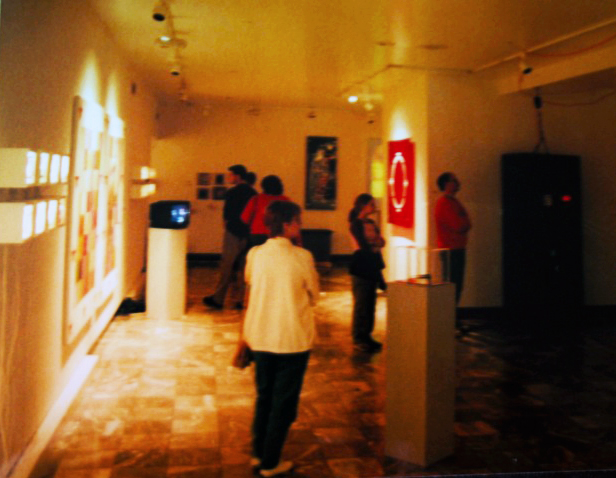


































































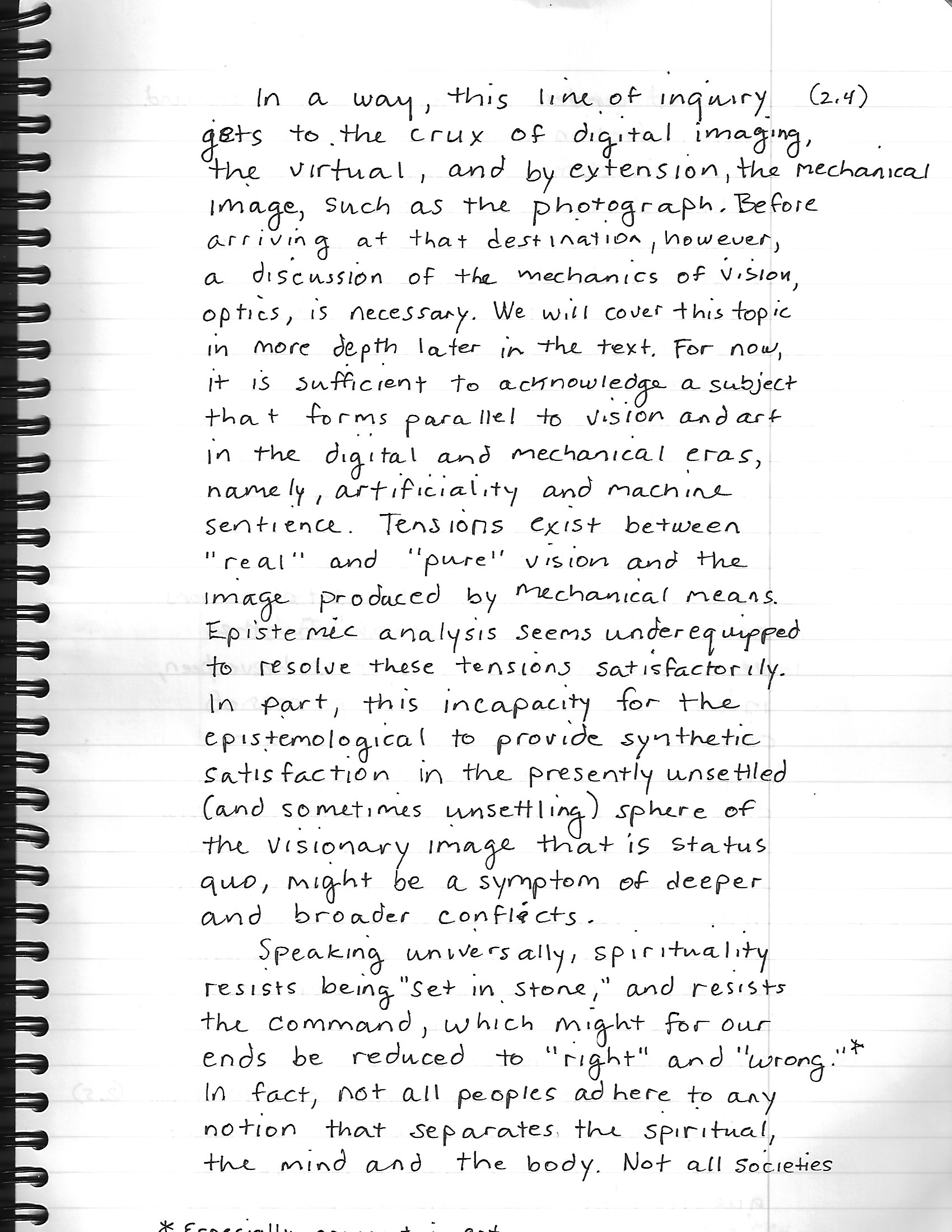

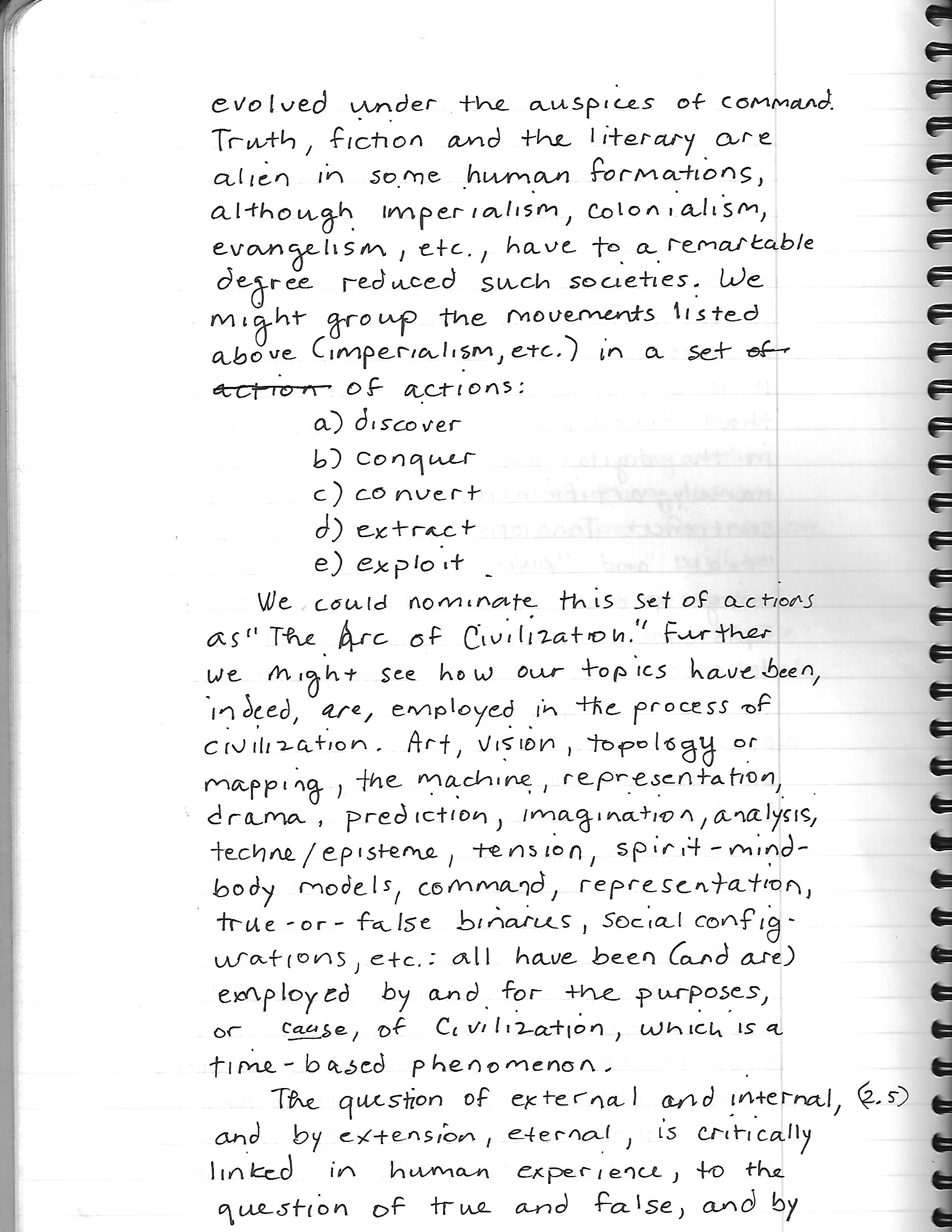
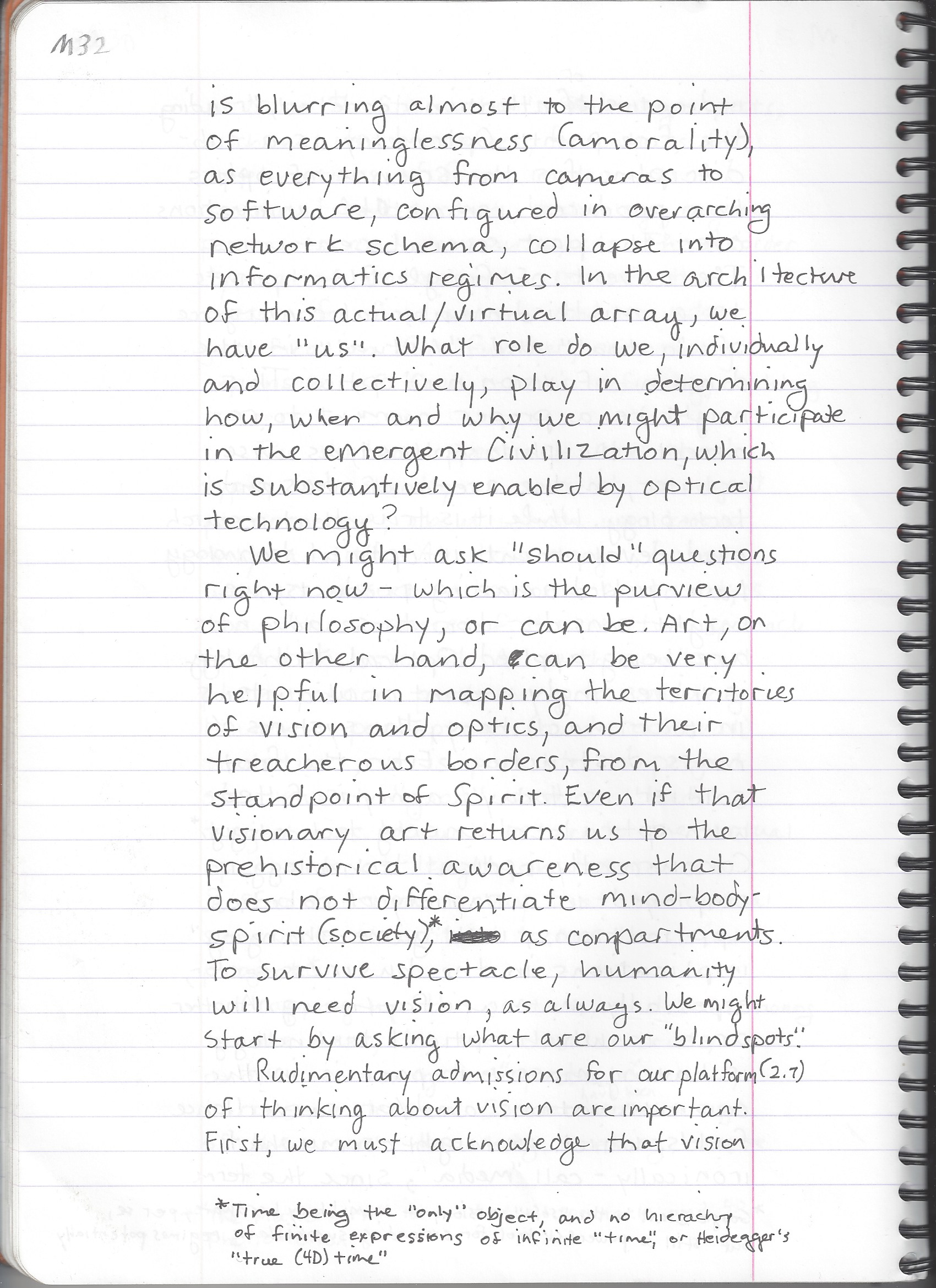
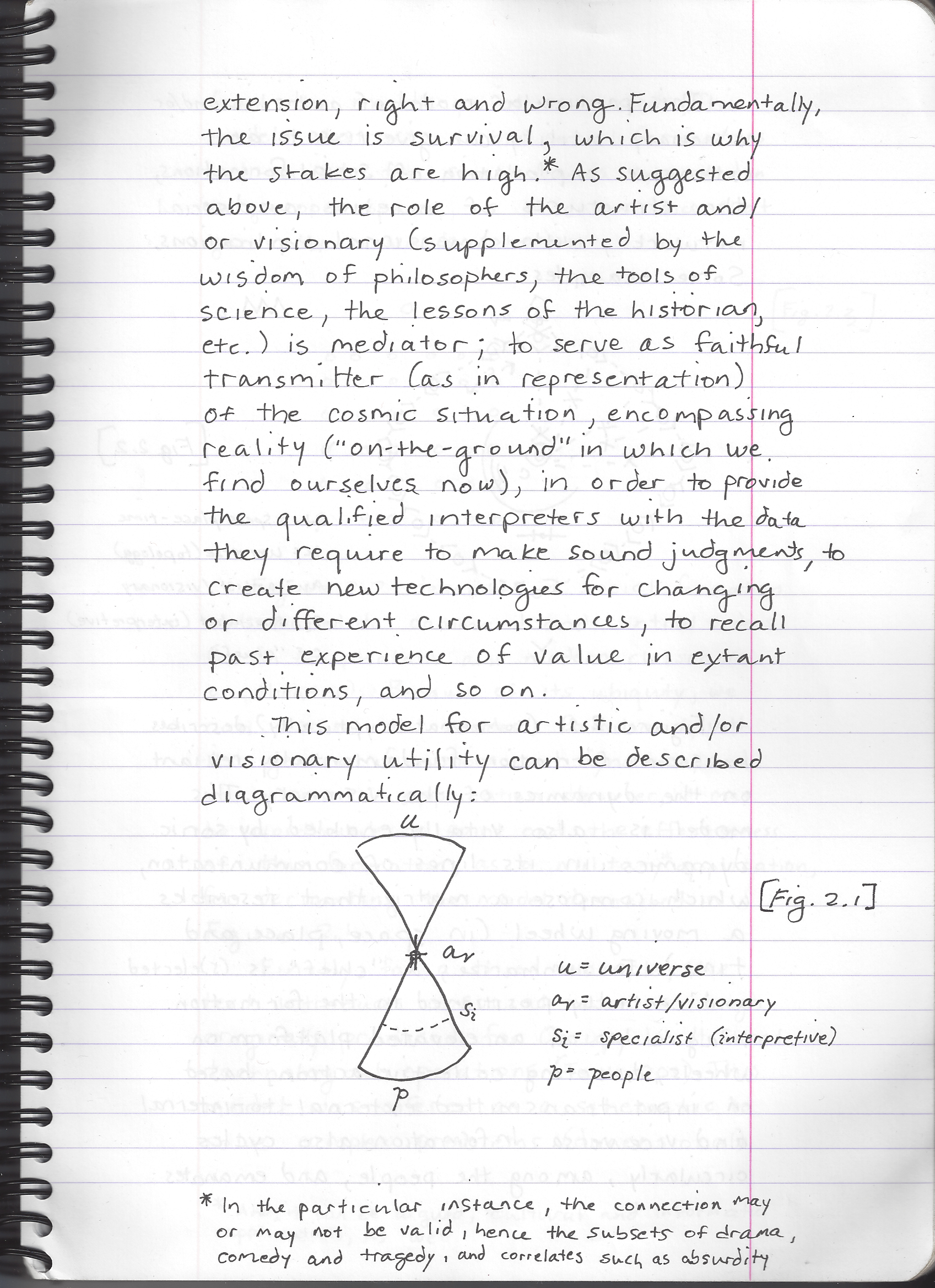
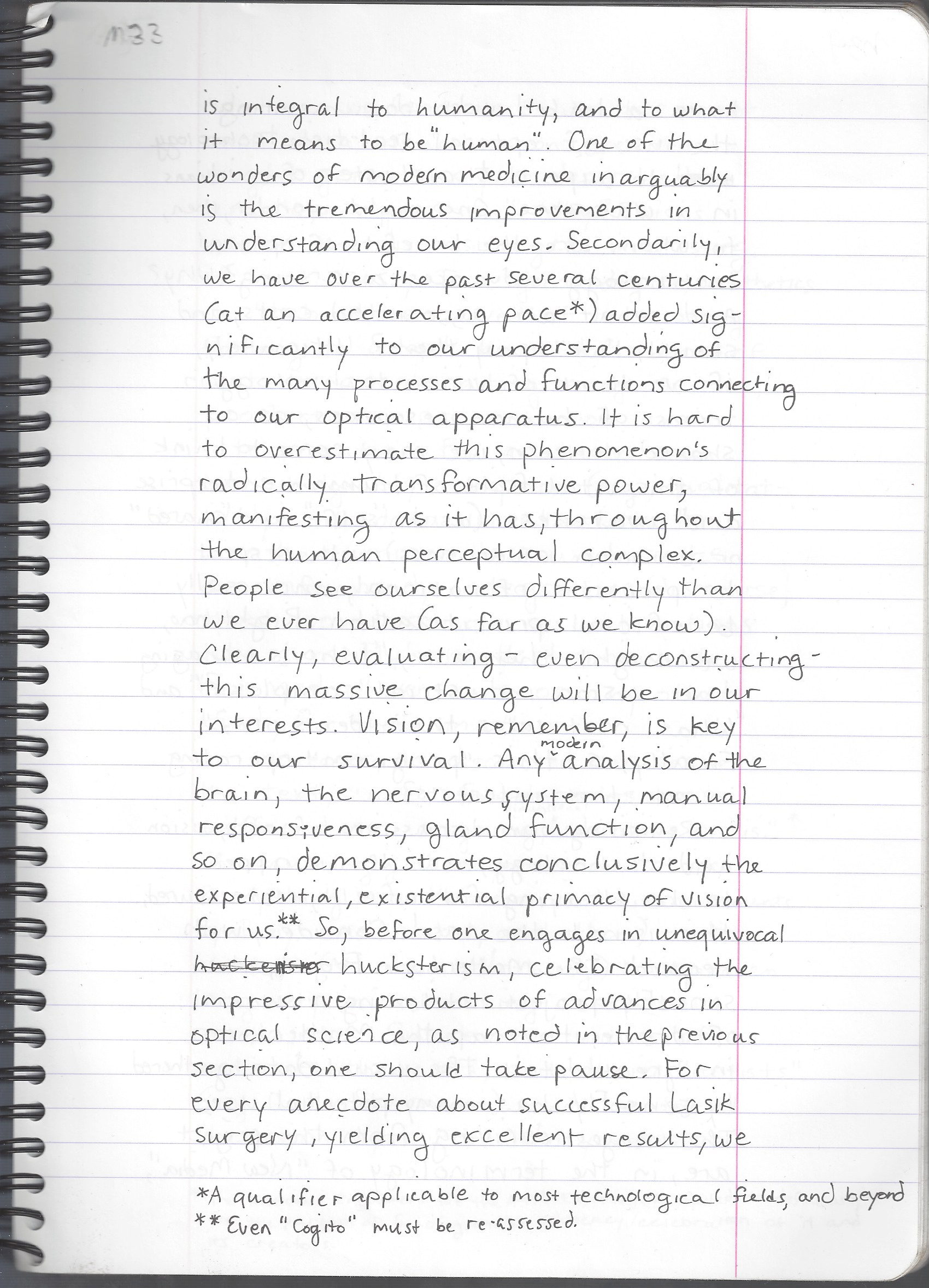

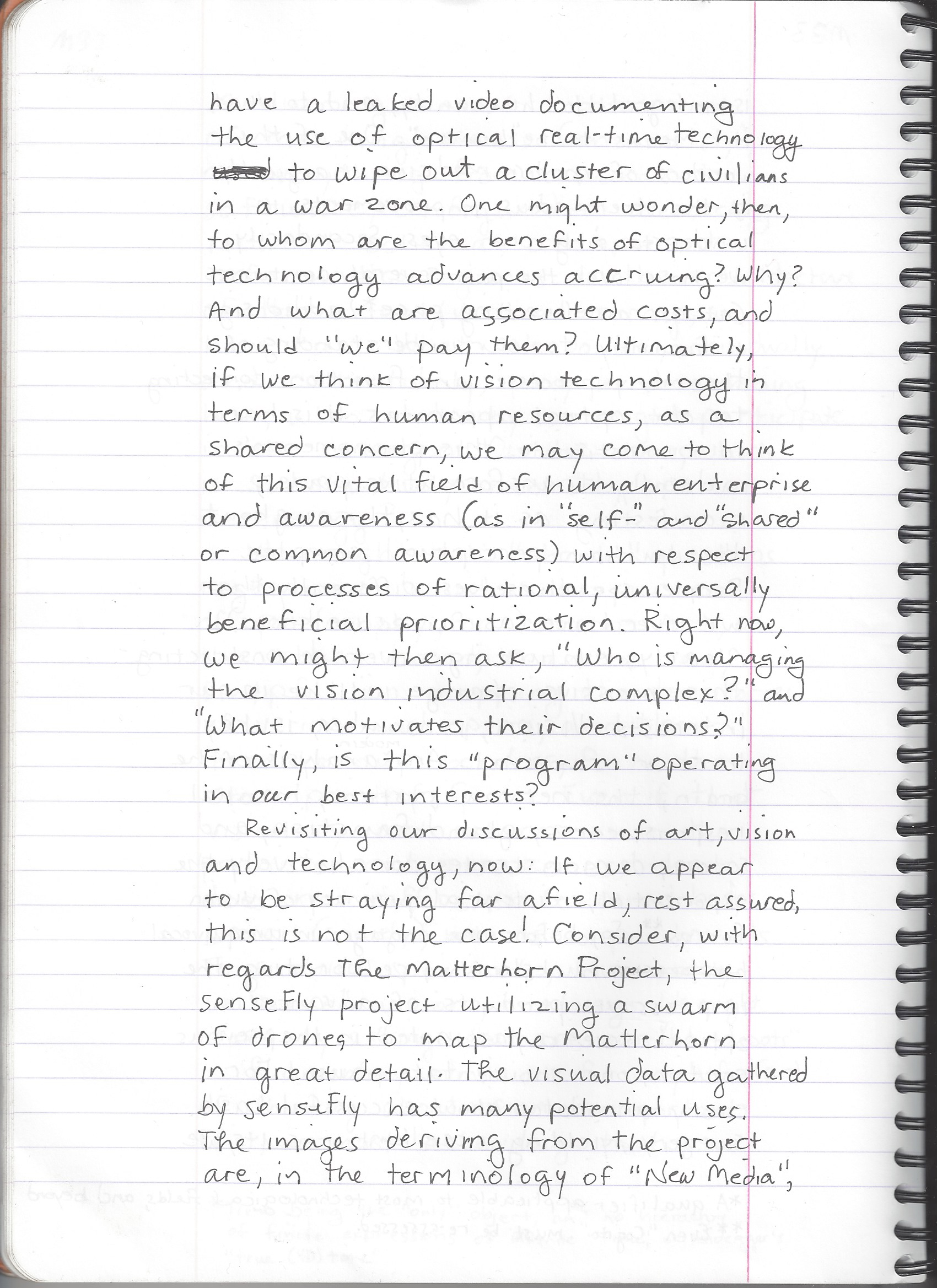
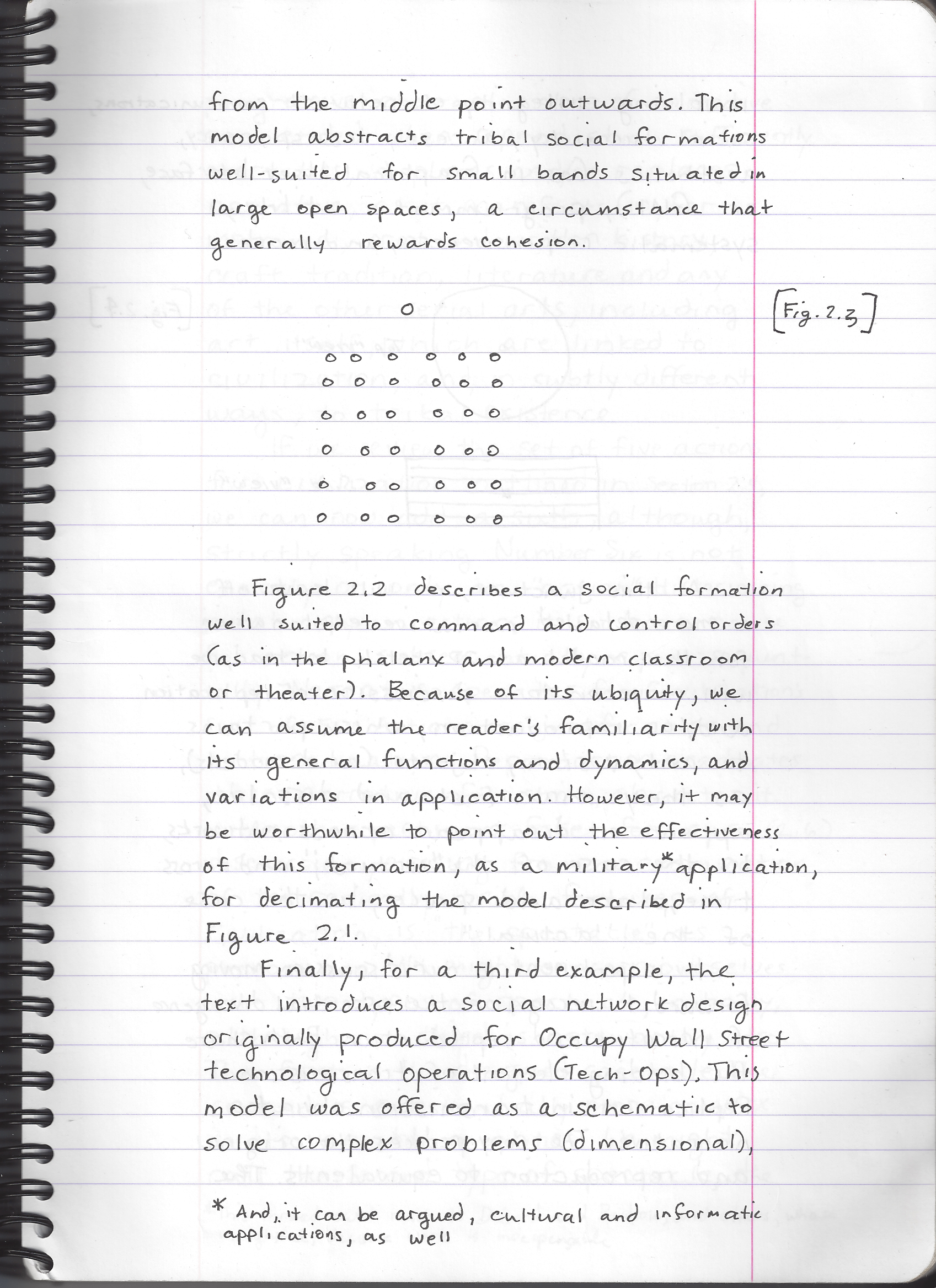
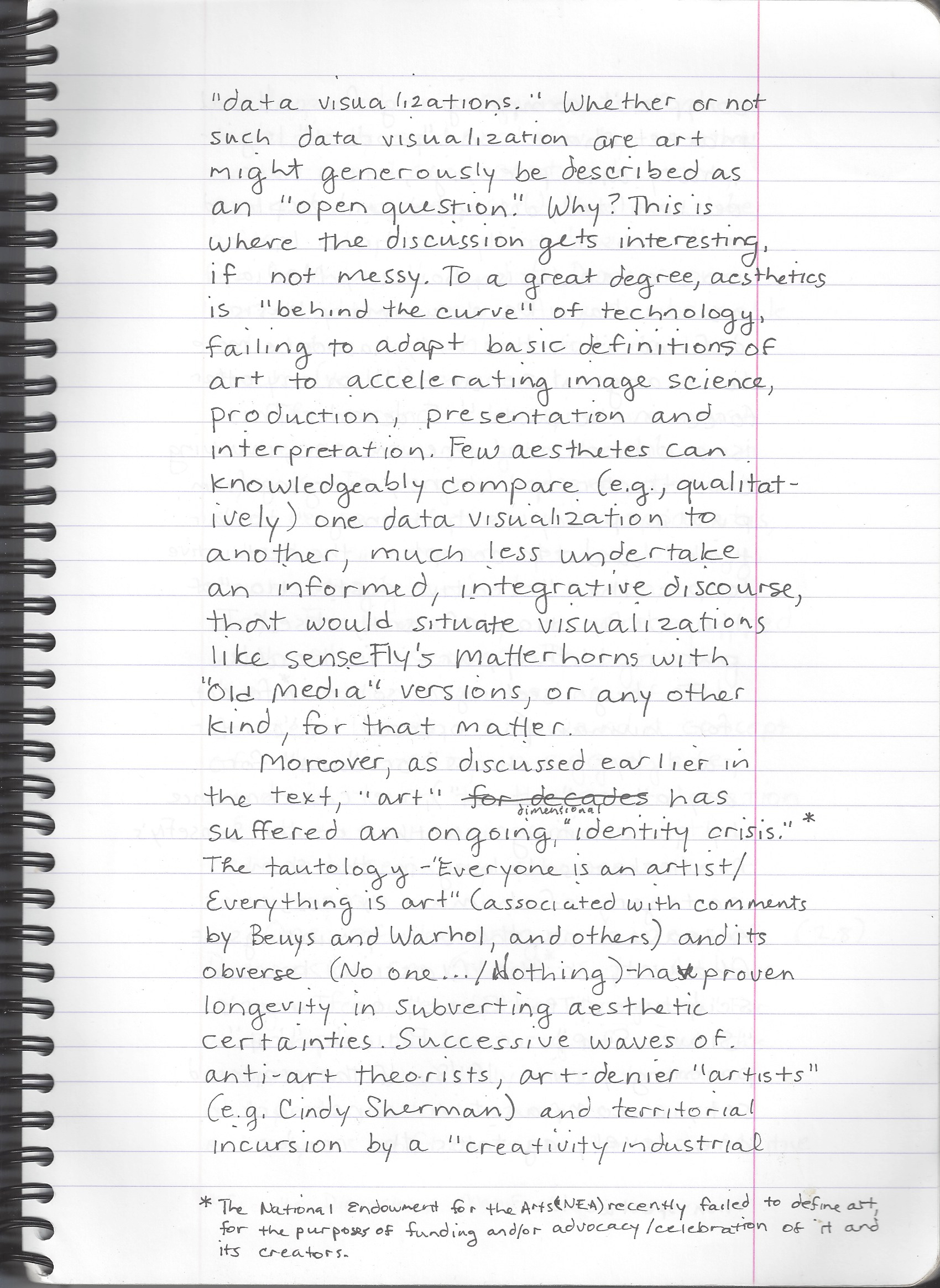

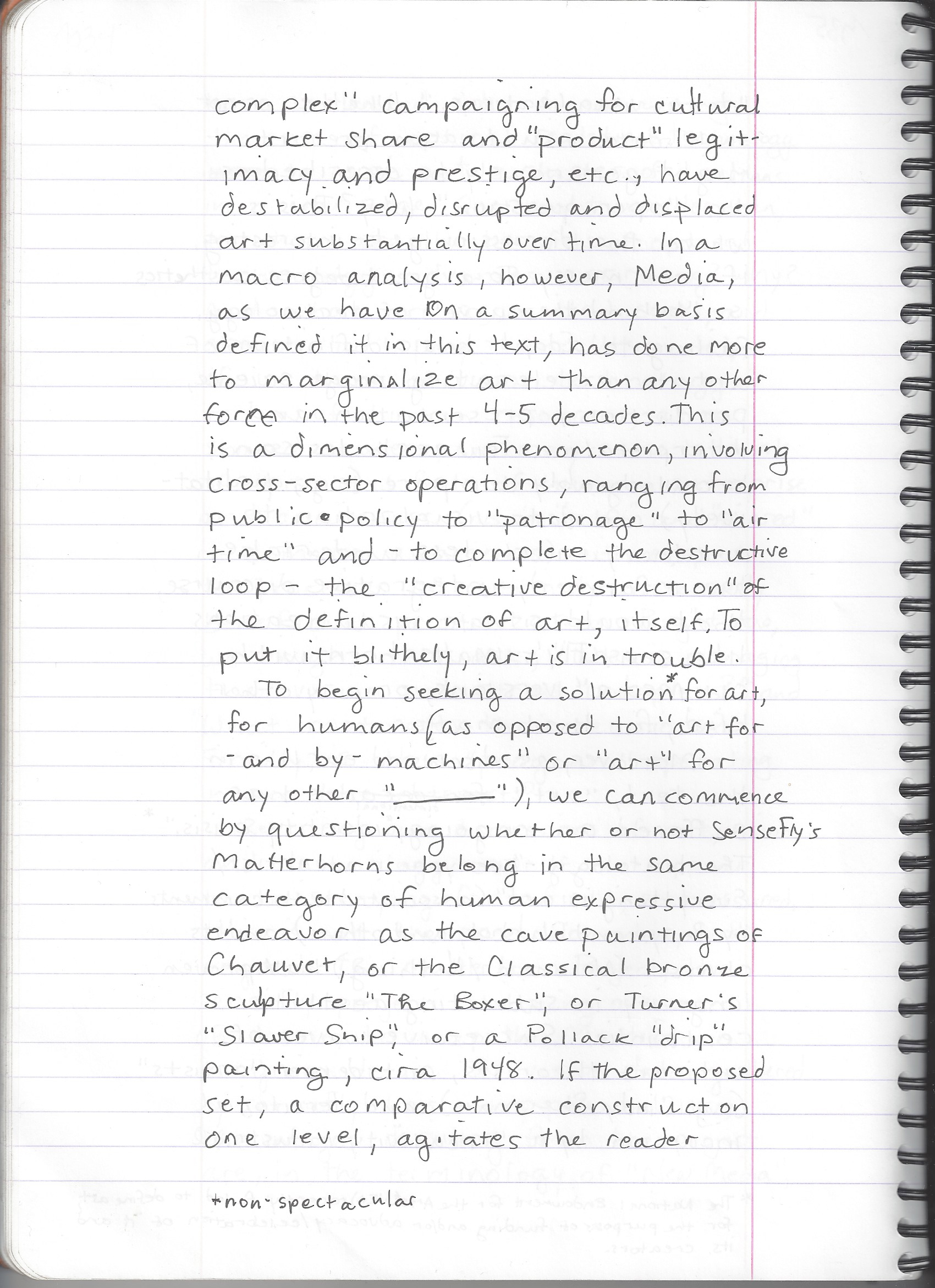

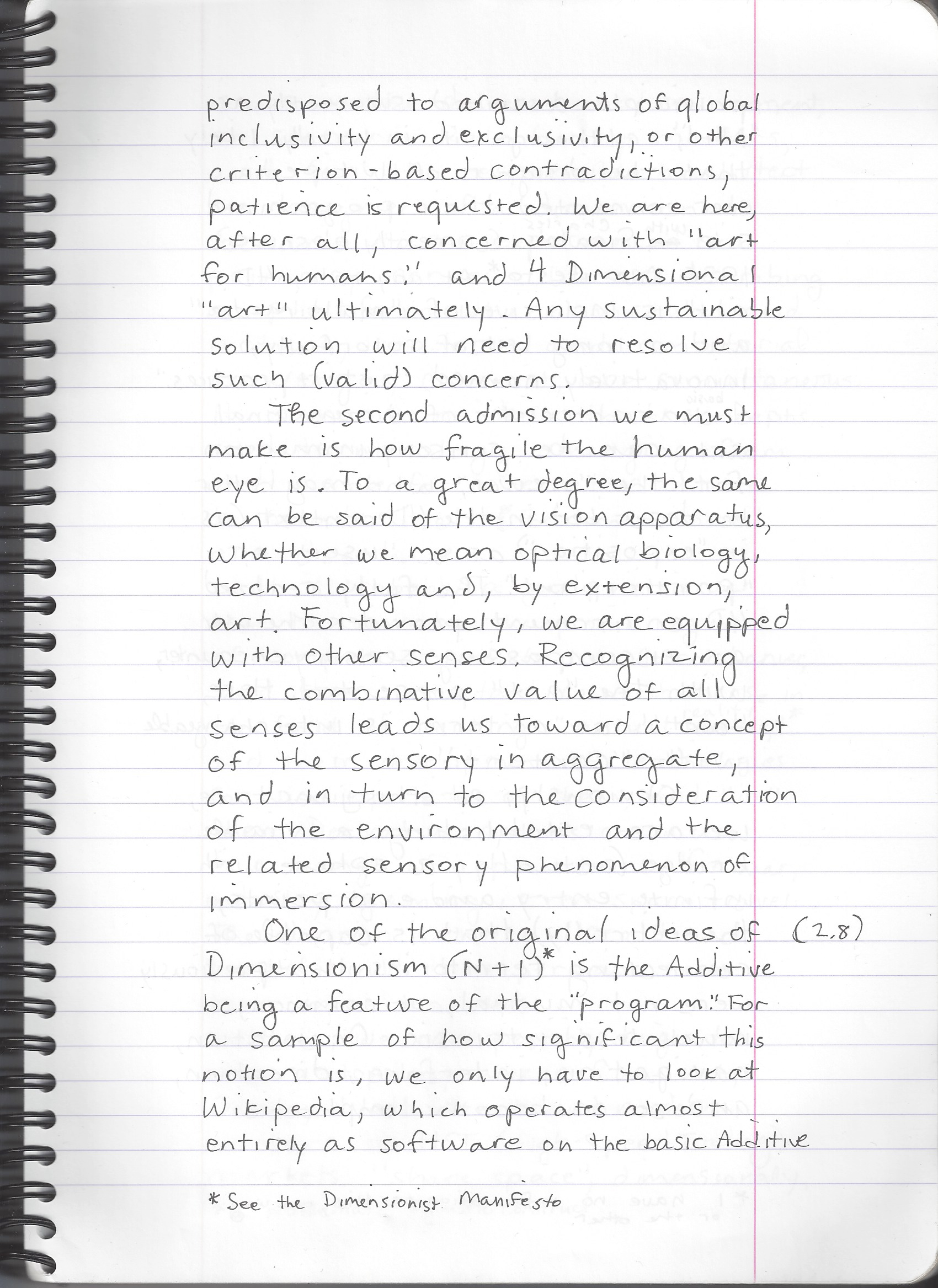
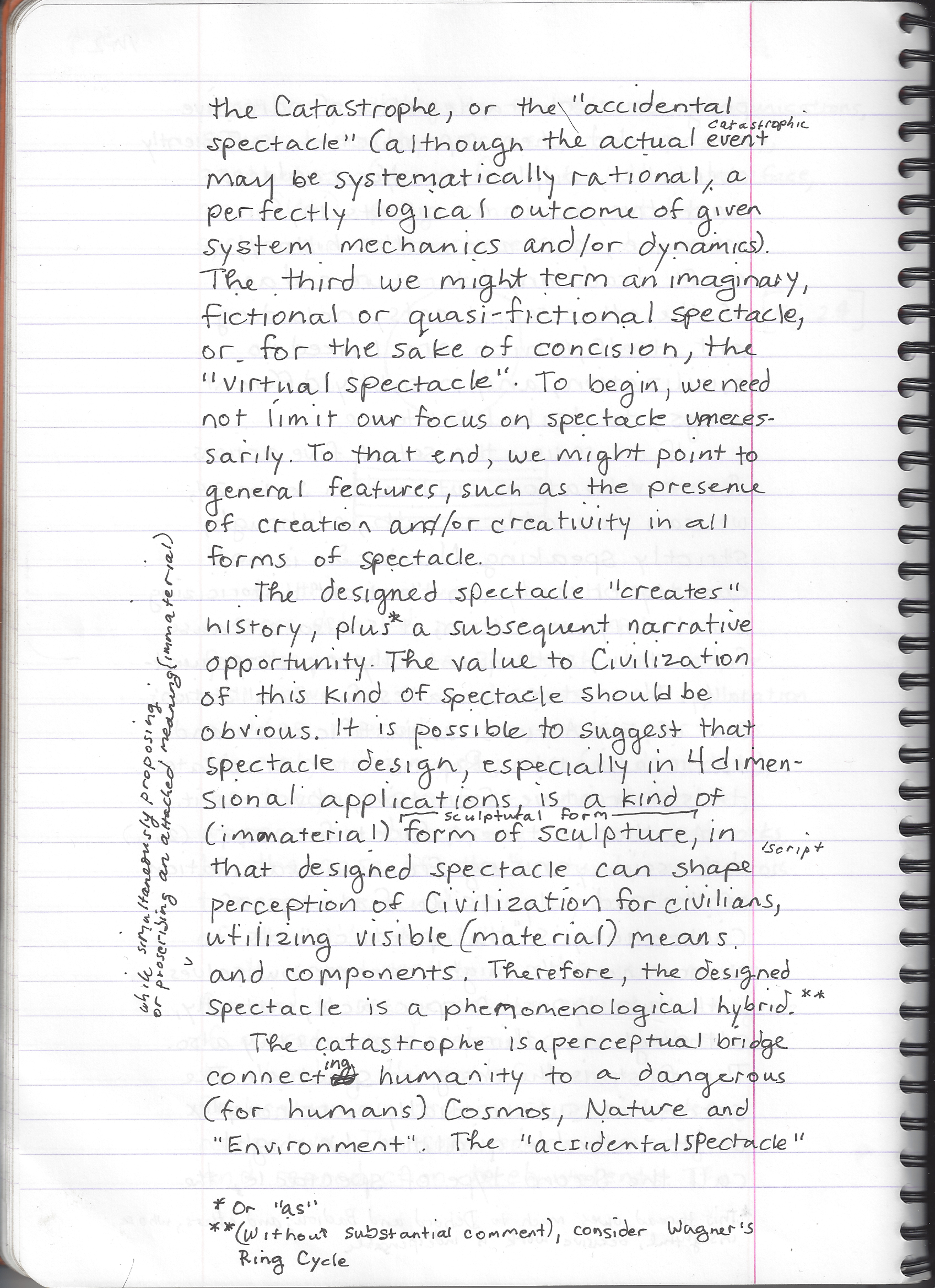
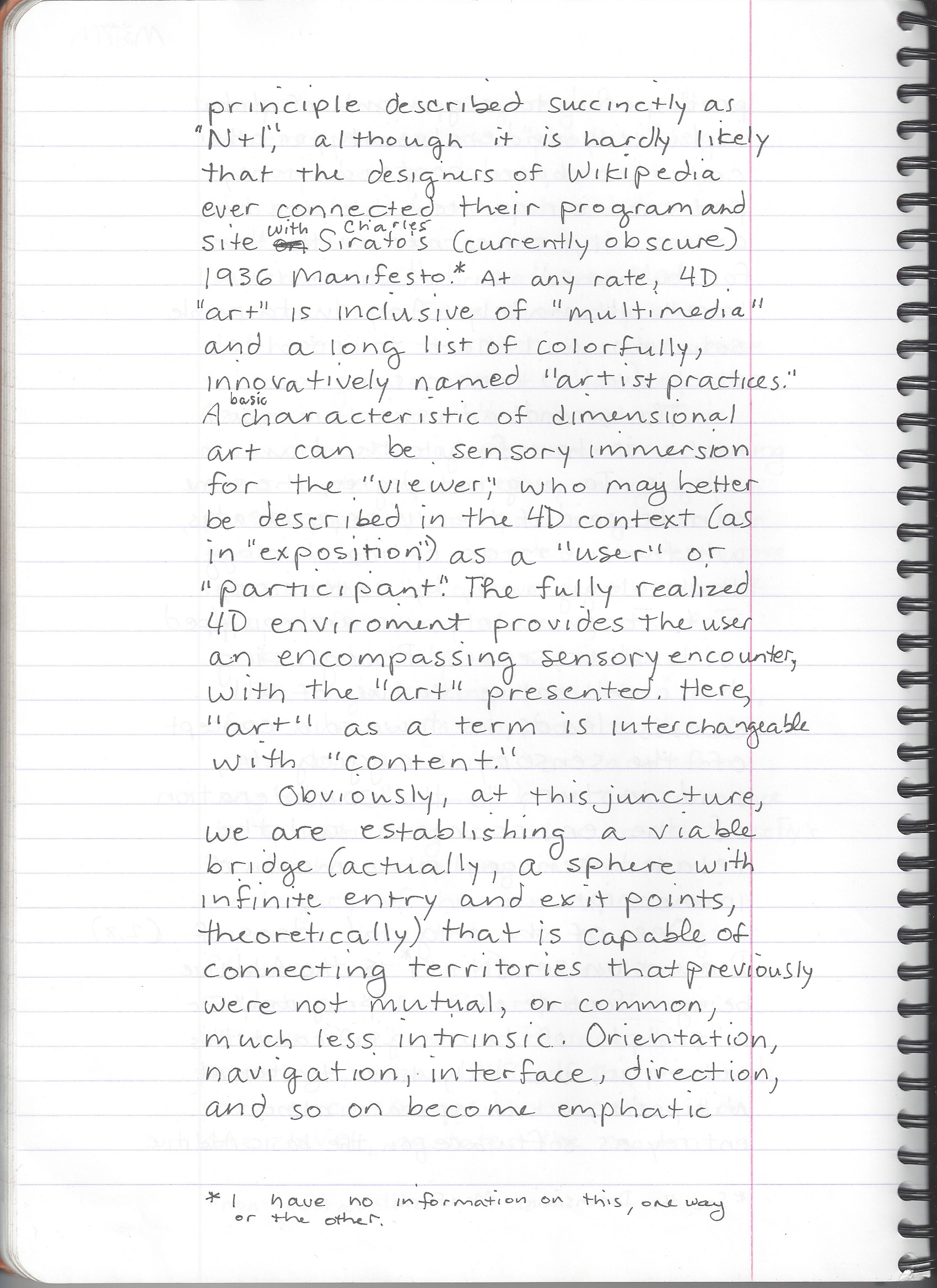
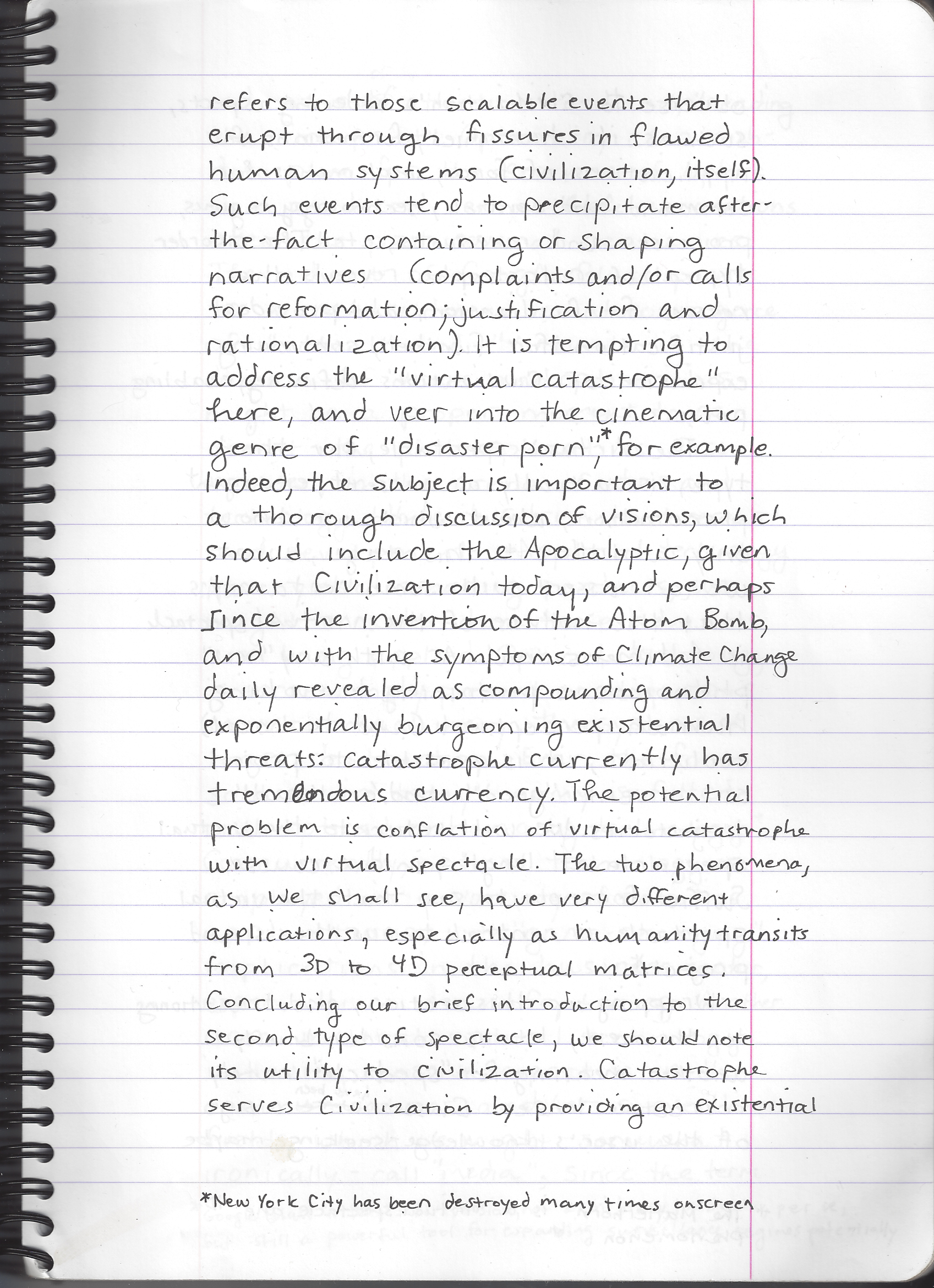
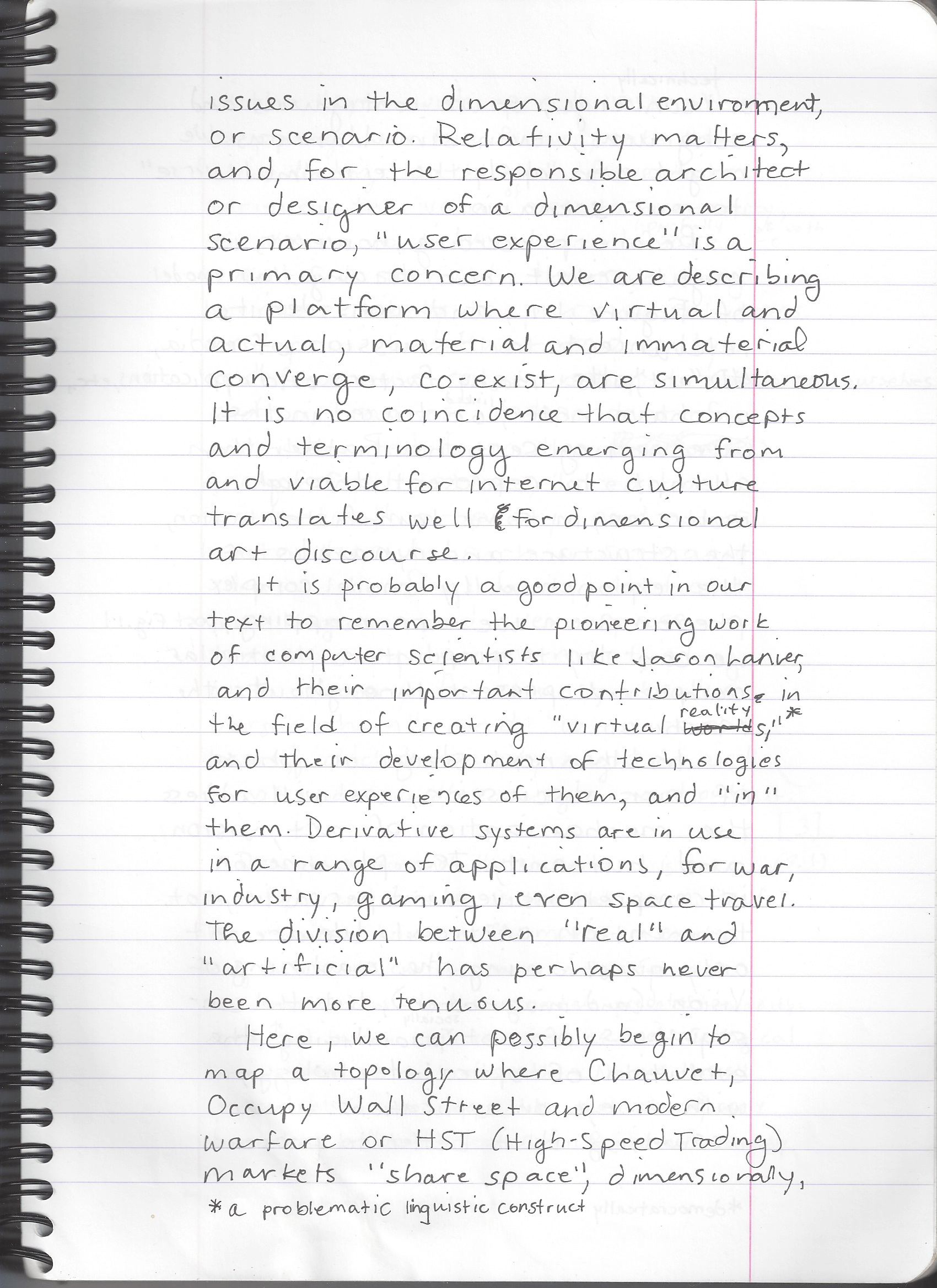

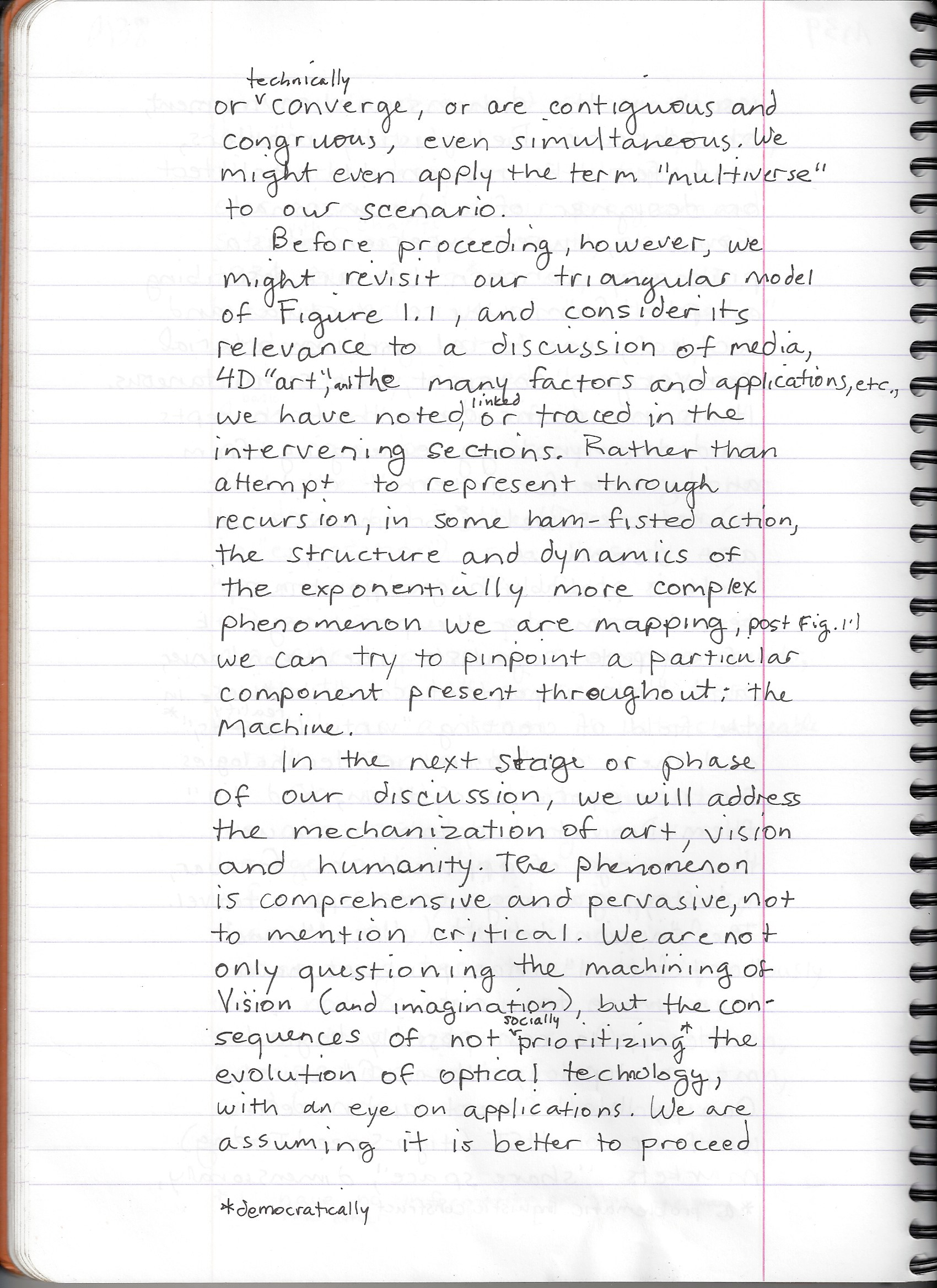






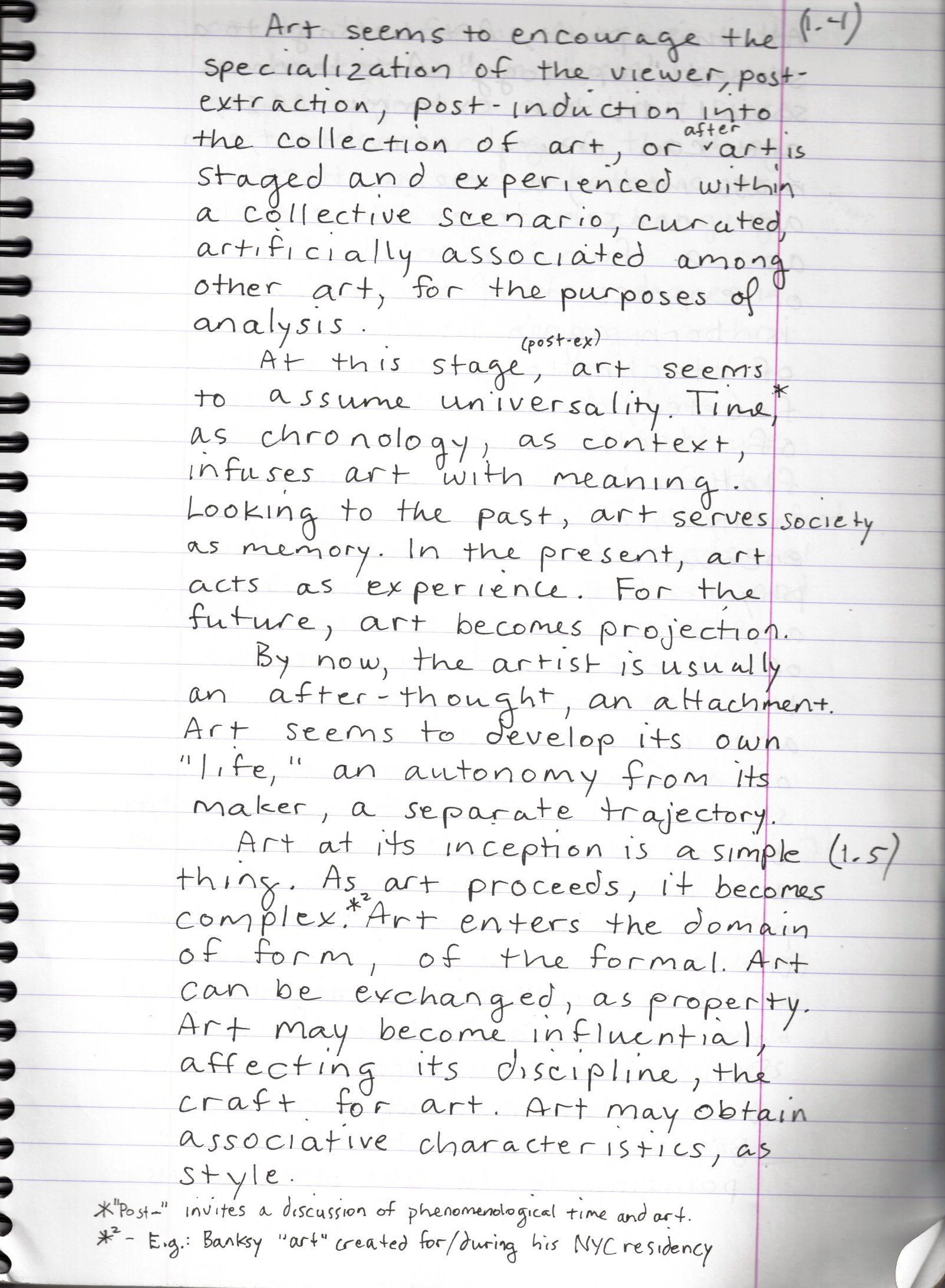





















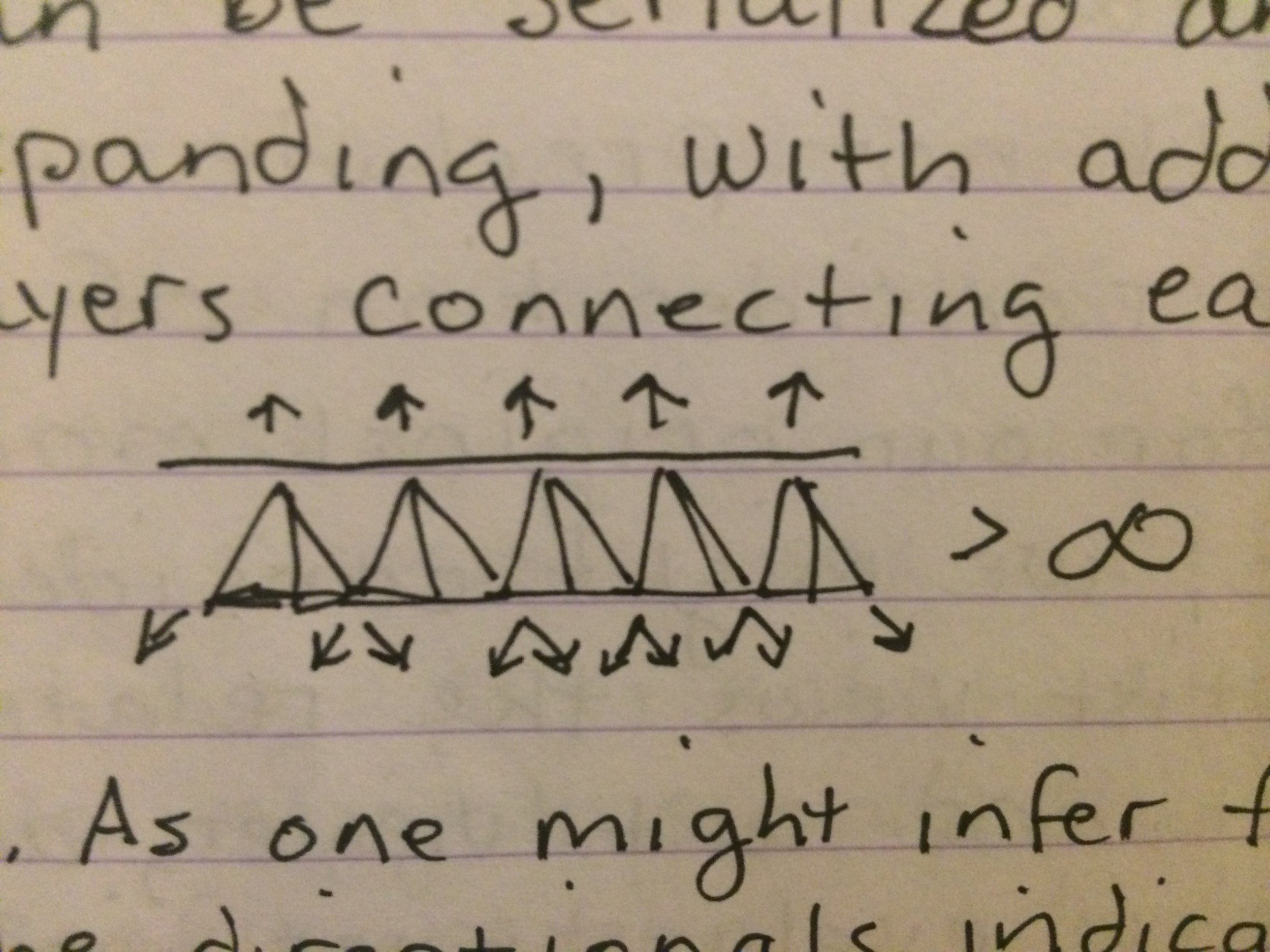
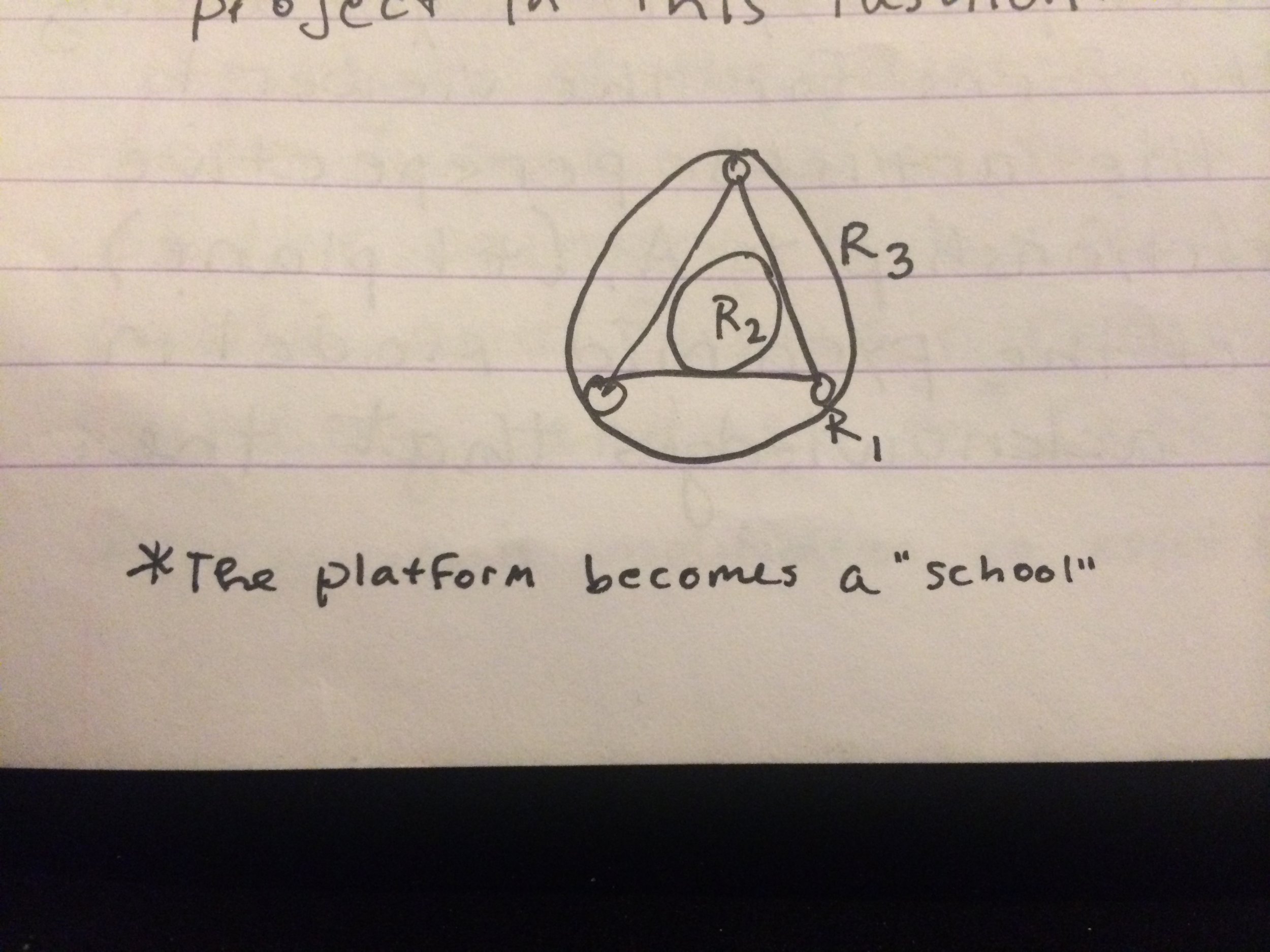

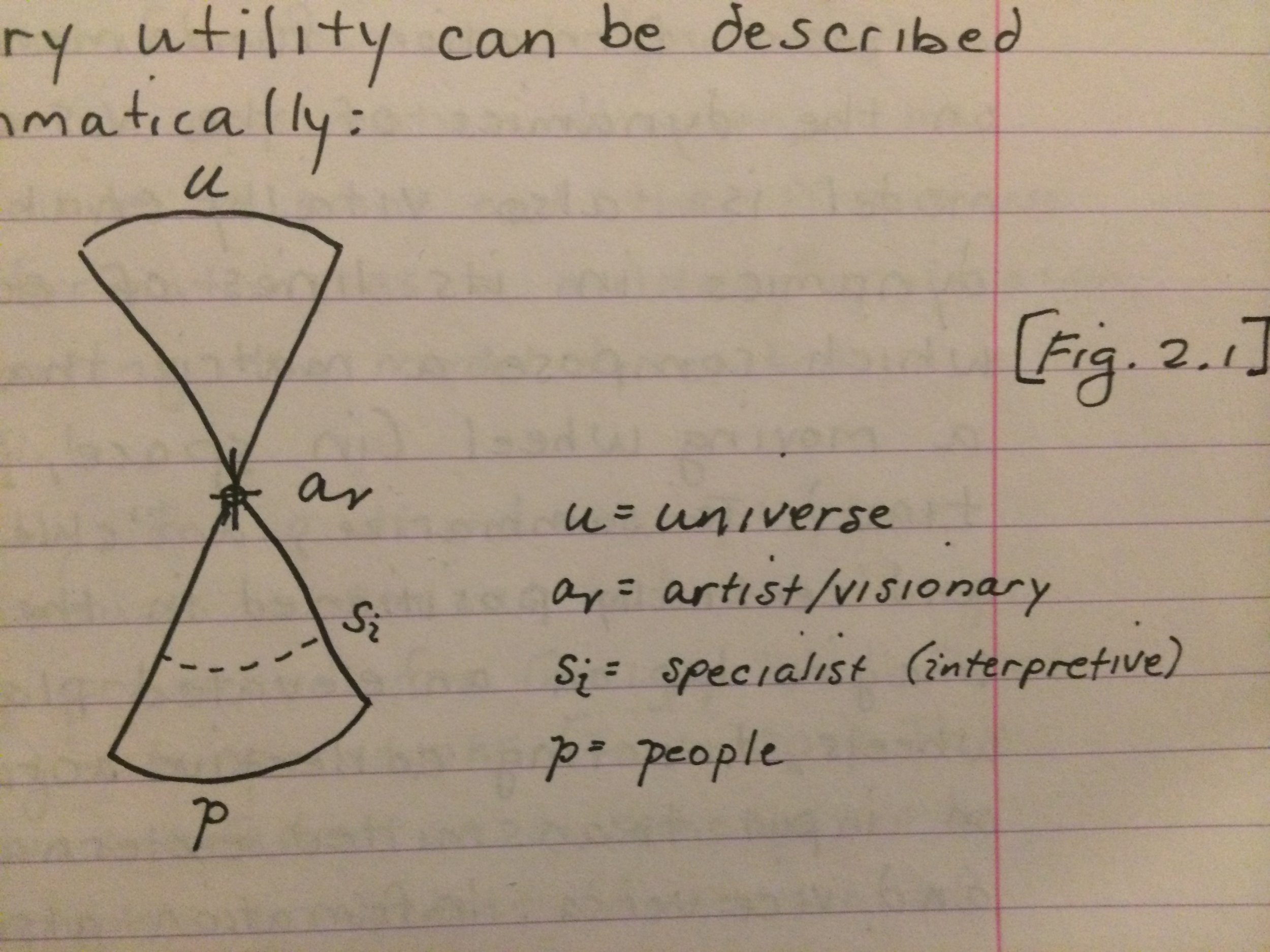





![Urbane Savage[a 4D novadic novel by Paul McLean]](https://images.squarespace-cdn.com/content/v1/501abbd4c4aaab20160f16af/1410721843658-NKML2UO0MECN4JP35BDR/image-asset.jpeg)

![nyc 2010 raw [pjm]](https://images.squarespace-cdn.com/content/v1/501abbd4c4aaab20160f16af/1410722470013-V8XNNLCOUBTGQ1X7A8UN/image-asset.jpeg)









![[Hubble Space Telescope]](https://images.squarespace-cdn.com/content/v1/501abbd4c4aaab20160f16af/1397415372680-ZN08Y3O3IP1KWZLOEROH/arp147_hst_big.jpg)
![Four Directions [Lakota]; click here for a nice introduction to Lakota applied color/direction/meaning.](https://images.squarespace-cdn.com/content/v1/501abbd4c4aaab20160f16af/1397414414911-LIUZZ04R9XS4T97EV58Z/lakota.jpg)



!["Shane's Hand at Cultura01 [Projection-affected]" (PJM, 2005)](https://images.squarespace-cdn.com/content/v1/501abbd4c4aaab20160f16af/1395595405209-RA5QT930B9AJ1C8ILEIM/image-asset.jpeg)



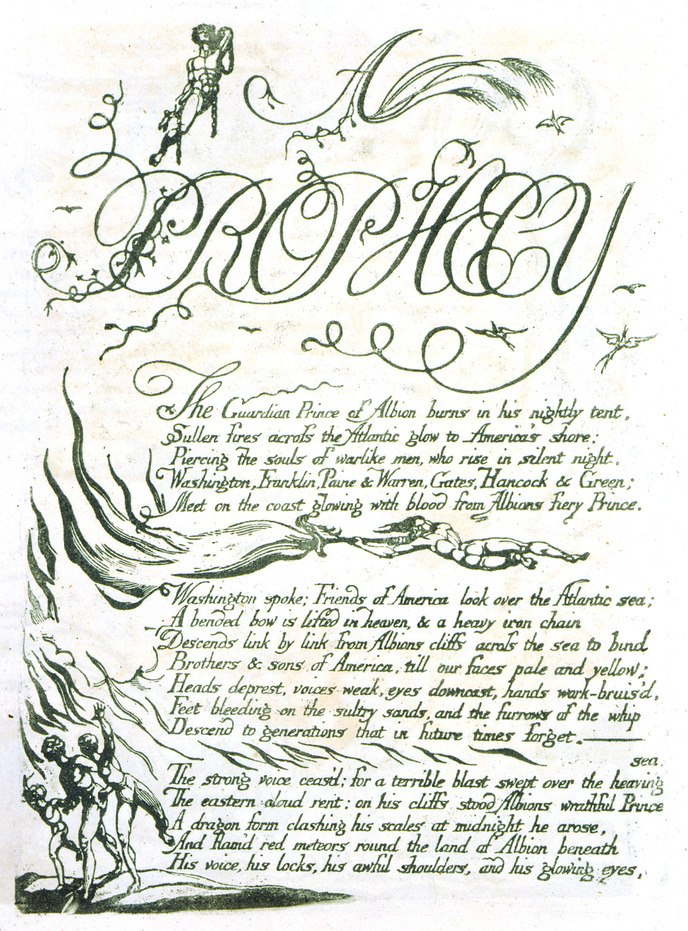
![Animation still [CONTENT 5] PJM 2007](https://images.squarespace-cdn.com/content/v1/501abbd4c4aaab20160f16af/1395371811714-FNYDS5Q9OKG1V9G2NPAM/image-asset.jpeg)
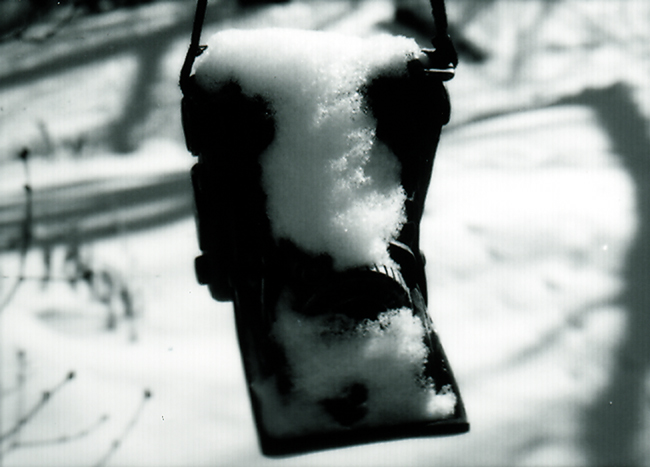


![[Fig. 1. The Boxer at Rest, from the Museo Nazionale Romano-Palazzo Massimo alle Terme, on view in Gallery 153] - Caption from the Met website; click image to read Sean Hemingway's article on the Boxer.](https://images.squarespace-cdn.com/content/v1/501abbd4c4aaab20160f16af/1374935323986-OVINPZY5FCAVVTHIYEIF/boxer1.jpg)
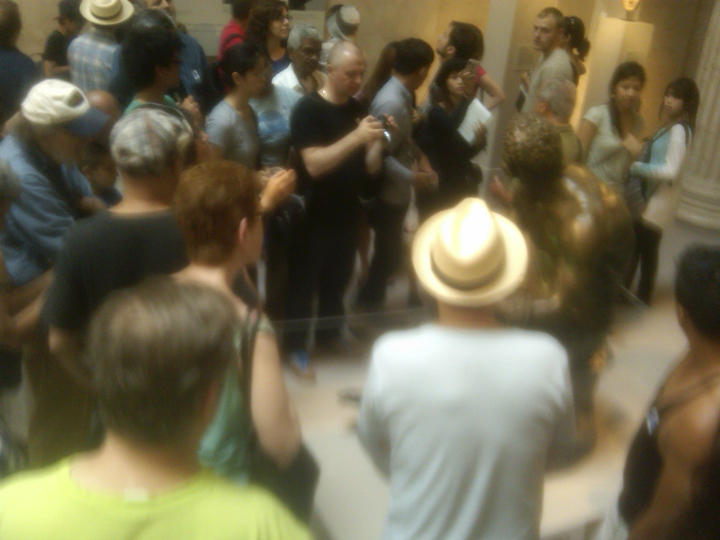
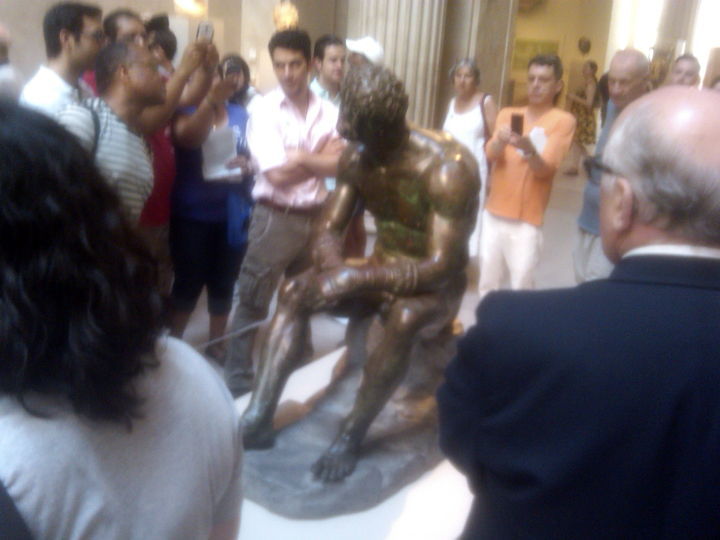


![[The Bronze statue Boxer at Rest at time of discovery in 1885 on the south slope of the Quirinal Hill in Rome.] - Caption, ibid. Click on the image to read the Met exhibit summary.](https://images.squarespace-cdn.com/content/v1/501abbd4c4aaab20160f16af/1374938209132-H8DVJIZVNRNZQAAABLDH/boxer2.jpg)


![[Richard Humphreys, the Boxer by John Hoppner (British, London 1758–1810 London)] - Met collection](https://images.squarespace-cdn.com/content/v1/501abbd4c4aaab20160f16af/1374970775573-63WH1KU6N37394BZPJ8G/Hoppner-boxer.jpg)





